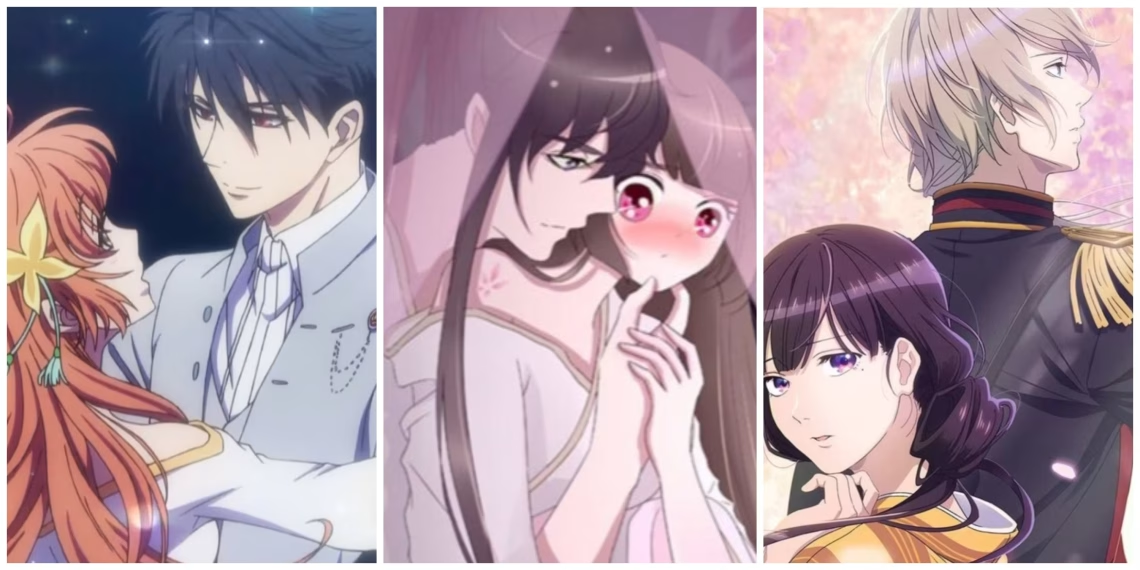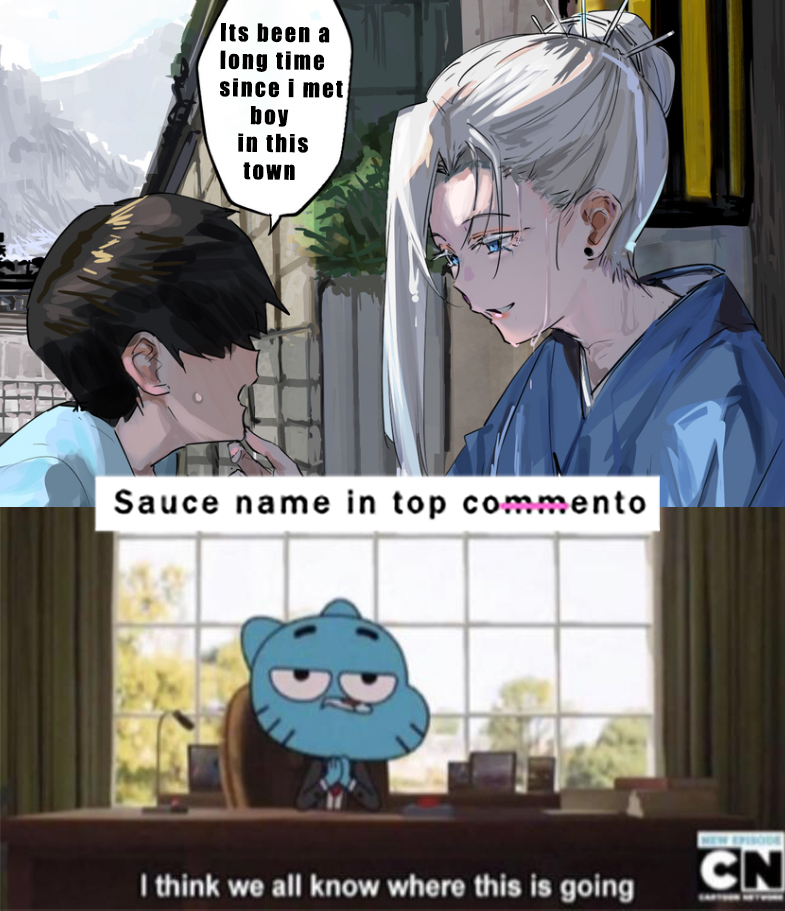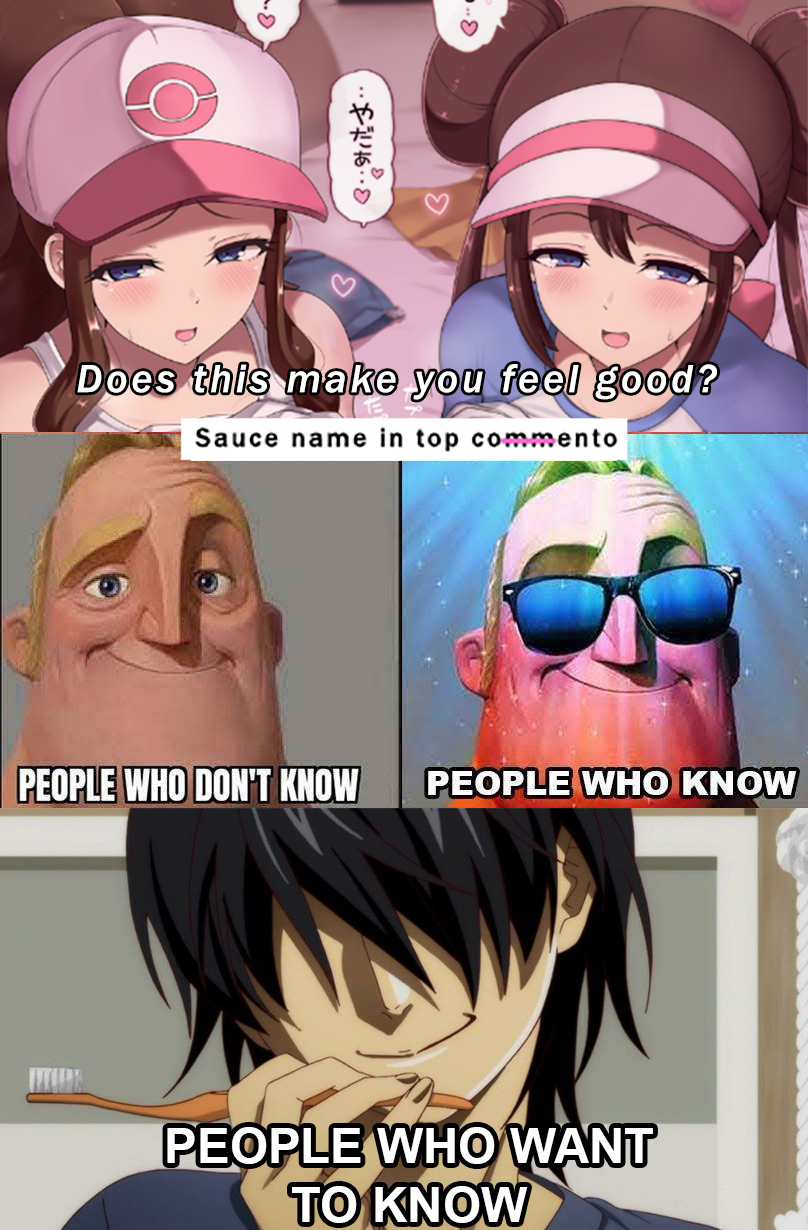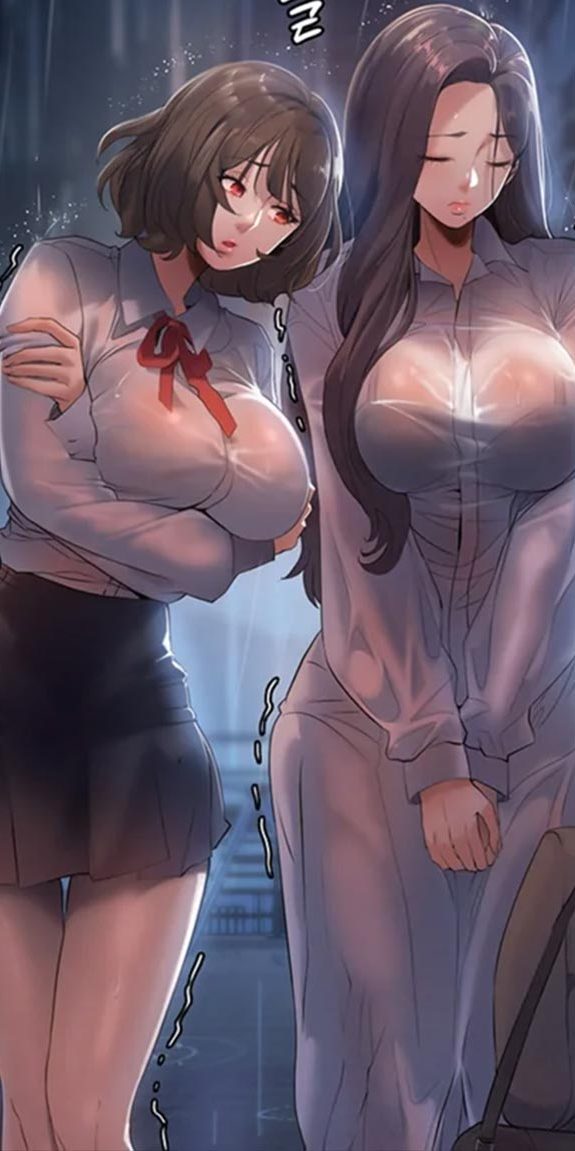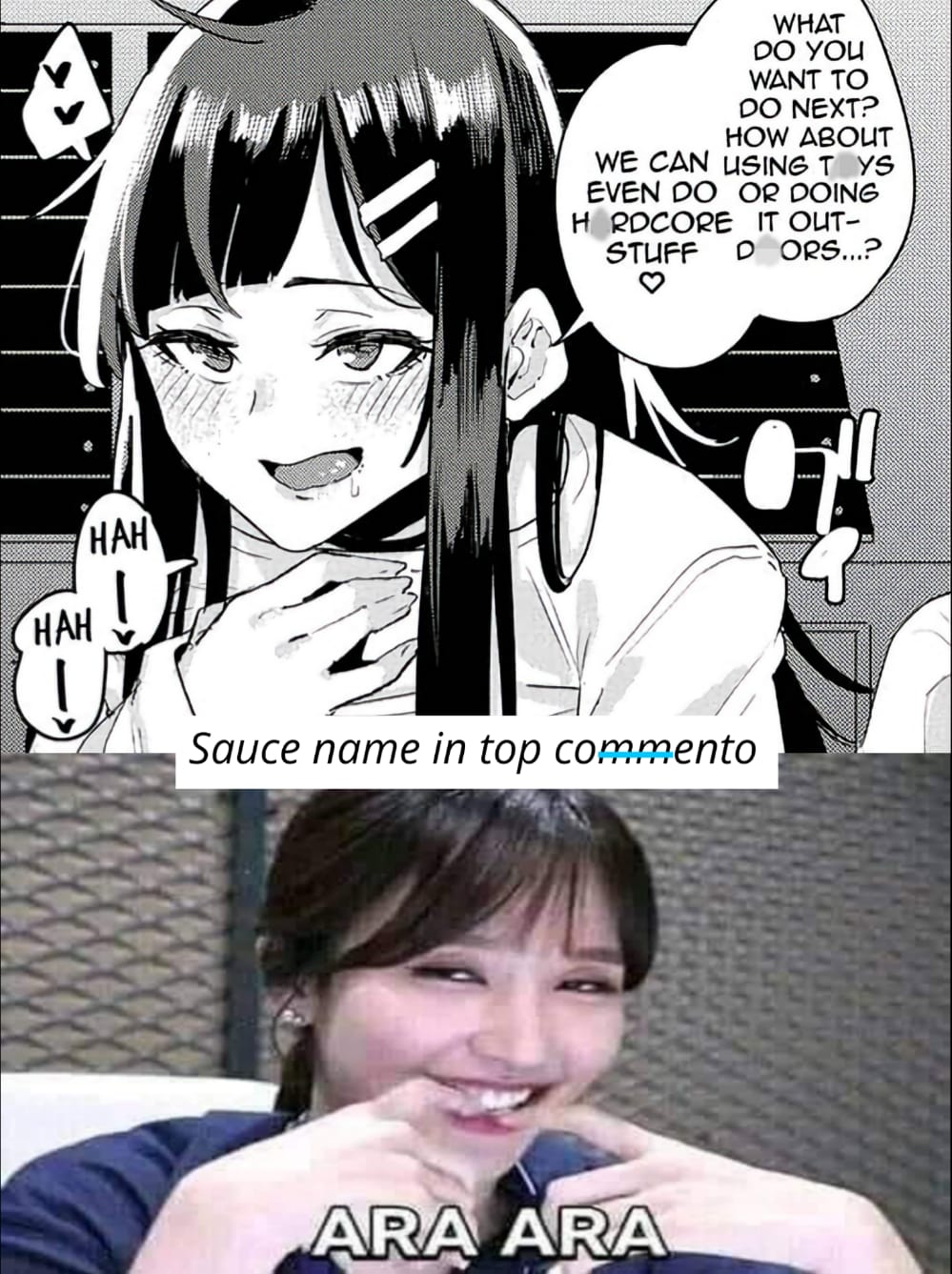Shojo and Josei romance genres often fly under the radar compared to their shonen counterparts. Known for their slow-burn relationships and tales of unrequited love, these genres still offer compelling romance narratives that deserve attention. Shojo and its more “mature” counterpart, Josei, go deeply into the inner lives of female characters as they navigate the complexities of falling in love.
These genres frequently tell stories from the perspectives of female protagonists, highlighting their personal growth. While popular tropes like the shy girl falling for the popular guy are common, each Shojo and Josei romance story brings its unique twist. Typically, these narratives are pure, feel-good stories featuring dreamy male leads that entertain audiences.

In the vast world of anime, there’s something for everyone. Fans who are passionate about romance can find plenty of series to satisfy their cravings. The appeal of shojo extends beyond just female viewers. Within these romantic tales, fans witness characters forging deep connections, building sustainable and genuine relationships, and ultimately falling in love—often with the least likely, yet most obvious, character.
All these anime celebrate love and highlight its beauty, which is exactly what draws fans to the genre. Love is rarely a straight path, but the destination is universally cherished. Shojo and Josei’s anime shows us that despite the twists and turns, the journey to love is a beautiful adventure.
10. Tomo-chan Is a Girl!
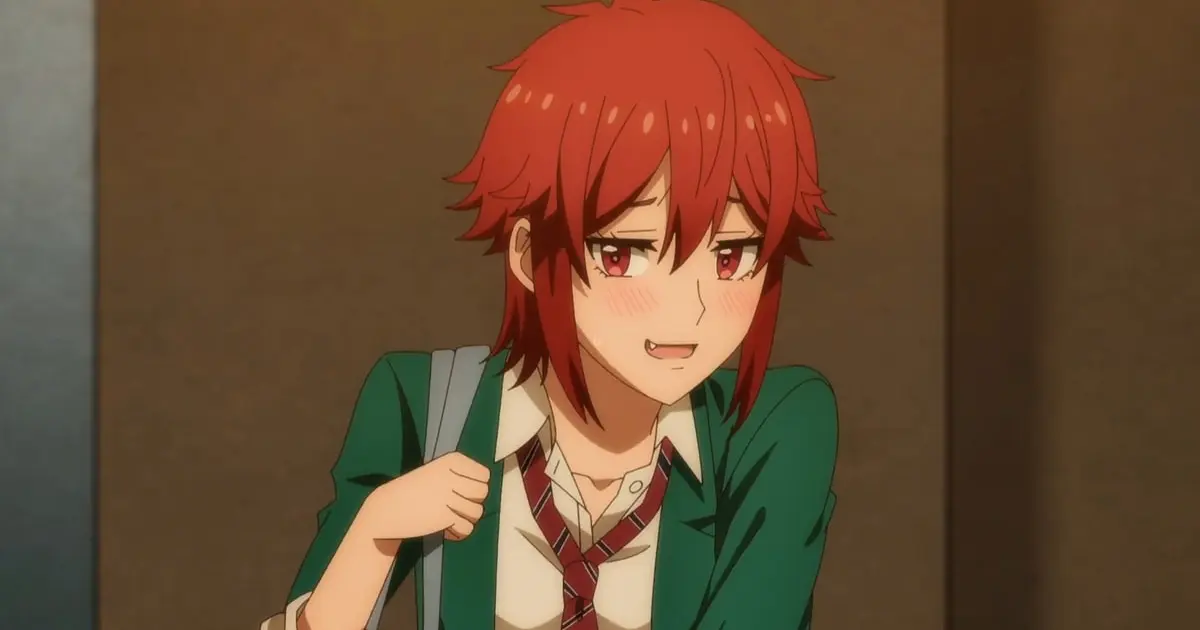
Based on Fumita Yanagida’s popular and completed manga, Tomo-chan Is a Girl! was one of the standout rom-coms of Winter 2023. The series follows Tomo and Jun, who share a close friendship. However, while Tomo harbors romantic feelings for Jun, he only sees her as a buddy, creating comedic tension between them.
Despite its romantic undertones, Tomo-chan Is a Girl! primarily excels as a comedy. The endearing dynamic between Tomo and Jun forms the heart of the humor, complemented by the delightful antics of characters like Misuzu and Carol. Despite the comedic focus, Tomo and Jun’s chemistry develops convincingly over the season, adding depth to their relationship.
Unlike many romance anime, Tomo-chan Is a Girl! succeeds in portraying a believable bond between its leads, making it a refreshing and enjoyable watch for fans of the genre.
“Tomo-chan Is a Girl!” (Japanese: “Tomo-chan wa Onnanoko!”) is a Japanese four-panel (4-koma) manga series written and illustrated by Fumita Yanagida. The manga began serialization on the Twi4 Twitter account in April 2015 and later moved to the Saizensen website, where it continued until July 2019.
The series has been compiled into eight Tankobon volumes. “Tomo-chan Is a Girl!” has gained significant popularity for its charming characters, humor, and heartwarming romance.
The story centers around Tomo Aizawa, a tomboyish high school girl who harbors a deep, unrequited love for her childhood friend, Junichiro “Jun” Kubota. Despite Tomo’s attempts to express her feelings, Jun sees her only as one of the guys due to her athletic prowess and masculine demeanor. The series follows Tomo’s hilarious and often frustrating efforts to make Jun see her as a girl and, more importantly, as a potential romantic partner.
Set in a typical Japanese high school, “Tomo-chan Is a Girl!” explores the dynamics of friendship, gender roles, and unrequited love through the lens of its endearing characters and their interactions. The manga is known for its quick-witted humor, often delivered through the 4-koma format, which allows for concise and impactful storytelling.
Tomo Aizawa: The protagonist of the series, Tomo is a tomboy with a strong, athletic build and a straightforward personality. She is deeply in love with Jun but struggles to make him see her as a girl due to her tomboyish nature. Despite her tough exterior, Tomo has a vulnerable side, especially when it comes to her feelings for Jun.
Junichiro “Jun” Kubota: Tomo’s childhood friend and the object of her affection, Jun is an easygoing and somewhat dense high school boy. He views Tomo as his best friend and often fails to recognize her romantic advances. Jun is also athletic and enjoys sparring with Tomo, treating her as an equal rather than a potential girlfriend.
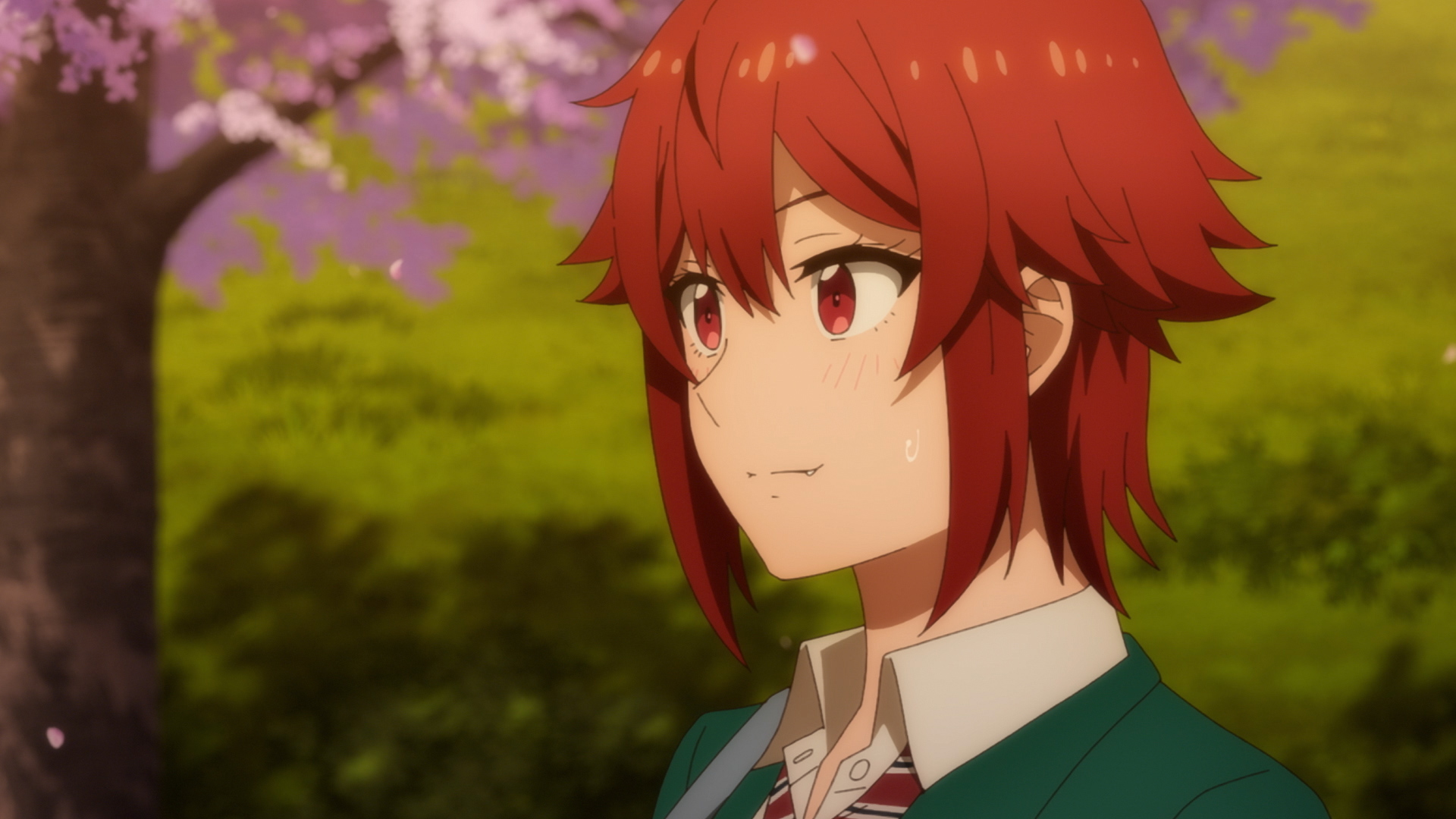
Misuzu Gundou: Tomo’s best friend and confidante, Misuzu is a sharp-tongued and cunning girl who often provides sarcastic commentary on Tomo’s romantic misadventures. Despite her sometimes cold demeanor, Misuzu genuinely cares for Tomo and tries to help her win Jun’s heart, often with mixed results.
Carol Olston: A cheerful and somewhat airheaded foreign exchange student, Carol is a close friend of Tomo and Misuzu. She often serves as comic relief with her eccentric behavior and unique perspective on the situations the group encounters.
Kousuke Misaki: The captain of the karate club and a classmate of Tomo and Jun, Misaki is kind-hearted and perceptive. He harbors feelings for Carol and often finds himself inadvertently caught up in the group’s antics.
Tomo-chan Is a Girl! excels as a romantic comedy, delivering laugh-out-loud moments and heartwarming scenes in equal measure. The series uses the 4-koma format to great effect, allowing for punchy humor and quick narrative progression. The romantic tension between Tomo and Jun is the driving force of the story, with each chapter adding layers to their relationship.
A central theme of the series is the exploration of gender roles and identity. Tomo’s struggle to be seen as a girl by Jun highlights the challenges faced by individuals who don’t conform to traditional gender expectations. The series handles this theme with sensitivity and humor, emphasizing the importance of self-acceptance and breaking free from societal norms.
The strong bonds of friendship among the main characters are a cornerstone of the series. Misuzu and Carol’s support for Tomo, despite their own quirks and agendas, adds depth to the story and showcases the value of having a reliable support system.
Fumita Yanagida’s art style is clean and expressive, perfectly suited to the 4-koma format. The character designs are distinctive and memorable, with each character’s personality reflected in their appearance and mannerisms. The artwork effectively conveys the comedic and emotional beats of the story, enhancing the reading experience.
“Tomo-chan Is a Girl!” has received widespread acclaim for its humor, character development, and refreshing take on romantic comedy. The series has been praised for its relatable and endearing characters, particularly Tomo, whose struggles and determination resonate with readers. The manga’s popularity led to an anime adaptation, further expanding its fanbase and solidifying its place in the romantic comedy genre.
“Tomo-chan Is a Girl!” is a delightful and heartwarming series that offers a unique blend of romance and comedy. Through its engaging characters, witty humor, and thoughtful exploration of gender roles, the series delivers a compelling and entertaining narrative that keeps readers invested from start to finish.
Whether you’re a fan of romantic comedies or looking for a lighthearted yet meaningful read, “Tomo-chan Is a Girl!” is a must-read that will leave you smiling and rooting for Tomo’s journey to win Jun’s heart.
9. Tonikawa: Over The Moon For You

Tonikawa: Over The Moon For You stands out in the romance stories by focusing on a married couple who have already traversed the journey of falling in love. In contrast to traditional romance narratives, the anime adopts a slice-of-life approach, offering glimpses into the daily antics of Nasa and Tsukasa as they navigate married life.
With its emphasis on pleasantness over dramatic highs, Tonikawa lacks the typical tension associated with romance, opting instead for a charming and lighthearted tone.
While the anime may not cater to those seeking melodramatic romance, it serves as a refreshing palate cleanser within the genre. Nasa and Tsukasa’s refreshingly direct approach to expressing their feelings, coupled with their witty and likable personalities, adds to the series’ appeal.
Despite their propensity for blushing at the mere suggestion of physical contact, their genuine affection for each other shines through, making their relationship both endearing and relatable.
“Tonikawa: Over The Moon For You,” also known as “Tonikaku Kawaii,” is a Japanese romantic comedy manga series written and illustrated by Kenjiro Hata, the creator of “Hayate the Combat Butler.”
The manga began serialization in Weekly Shonen Sunday magazine in February 2018 and has since gained widespread popularity for its charming characters, heartwarming romance, and quirky humor. In October 2020, the series received an anime adaptation produced by Seven Arcs, further solidifying its status as a beloved romantic comedy.
The story follows the unconventional romance between Nasa Yuzaki, a highly studious and serious-minded high school student, and Tsukasa Tsukuyomi, a mysterious girl he encounters one night. After a chance encounter leads to a life-threatening accident, Nasa is saved by Tsukasa, and he immediately falls in love with her. In a bold move, he asks her to marry him, and to his surprise, she accepts.
From there, the series follows the newlywed couple as they navigate the ups and downs of married life, from adjusting to living together to facing various challenges and adventures. Despite their differences in personalities and backgrounds, Nasa and Tsukasa’s love for each other continues to deepen as they build a life together.
Set in modern-day Japan, “Tonikawa: Over The Moon For You” blends elements of romance, comedy, and slice-of-life, creating a heartwarming and uplifting narrative that explores the beauty of love and the joys of companionship.
Nasa Yuzaki: The male protagonist of the series, Nasa is a highly intelligent and determined high school student who is infatuated with Tsukasa from the moment he meets her. Despite his serious demeanor, Nasa is deeply in love with Tsukasa and is willing to do anything to make her happy. His devotion to Tsukasa drives much of the plot, as he navigates the challenges of married life with enthusiasm and determination.
Tsukasa Tsukuyomi: The female lead, Tsukasa is a mysterious and enigmatic girl who saves Nasa’s life and later becomes his wife. She is kind-hearted, compassionate, and wise beyond her years, often providing guidance and support to Nasa when he needs it most. Tsukasa’s past and true identity are shrouded in mystery, adding an element of intrigue to the series.
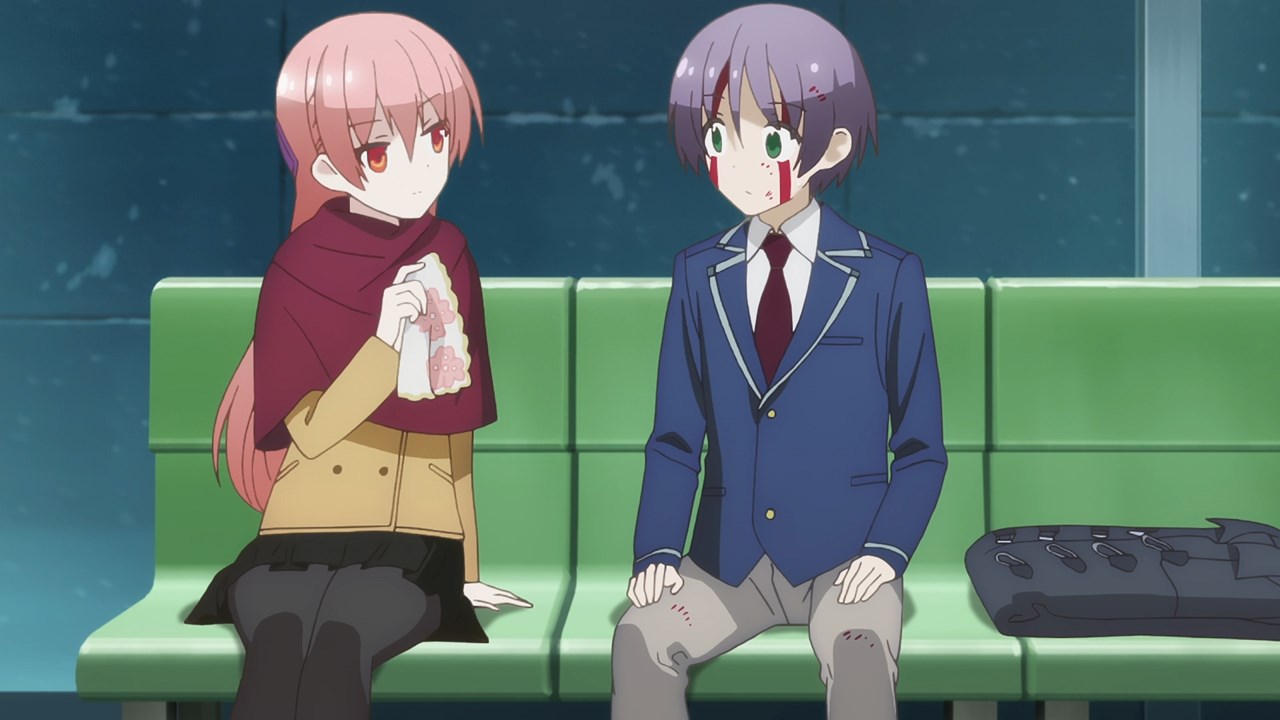
Kaname Arisugawa: Nasa’s childhood friend and classmate, Kaname is a lively and outgoing girl who often provides comic relief with her playful antics and sharp wit. She is fiercely protective of Nasa and frequently teases him about his relationship with Tsukasa, adding to the humor and charm of the series.
Aya Arisugawa: Kaname’s younger sister, Aya is a sweet and caring girl who looks up to Nasa and Tsukasa as role models. She often seeks advice from the couple and admires their loving relationship, serving as a source of support and encouragement for both Nasa and Tsukasa.
At its core, “Tonikawa: Over The Moon For You” is a romantic comedy that celebrates the beauty of love and the joys of companionship. The series explores the various aspects of romantic relationships, from the initial spark of attraction to the deep emotional connection that develops over time. Nasa and Tsukasa’s relationship serves as the heart of the story, providing a heartwarming and uplifting narrative that resonates with readers.
The series incorporates elements of comedy and slice-of-life, creating a lighthearted and entertaining narrative that appeals to a wide audience. The humor is often derived from the quirky personalities of the characters and the amusing situations they find themselves in, adding depth and charm to the story.
Tonikawa: Over The Moon For You features significant character growth and development as Nasa and Tsukasa navigate the challenges of married life. Both characters undergo personal growth as they learn to communicate, compromise, and support each other, resulting in a deeper understanding of themselves and their relationship.
Kenjiro Hata’s artwork in the manga is characterized by its clean lines, expressive character designs, and detailed backgrounds. The illustrations effectively convey the emotions and humor of the story, enhancing the reading experience. The anime adaptation by Seven Arcs features vibrant animation, fluid character movements, and colorful visuals that bring the world of “Tonikawa: Over The Moon For You” to life.
The music in the anime adaptation complements the series’ romantic and comedic elements. The opening theme, “Koi no Uta” by Yunomi featuring Tsukasa Tsukuyomi (voiced by Akari Kito), sets a cheerful and upbeat tone for each episode, while the ending theme, “Tsuki to Hoshizora” by KanoeRana, offers a soothing and melodic conclusion to the story.
“Tonikawa: Over The Moon For You” has received positive reviews from both critics and audiences for its charming characters, heartwarming romance, and engaging storytelling. The manga has been praised for its relatable characters, humorous dialogue, and endearing portrayal of married life. The anime adaptation has further expanded the series’ fanbase, attracting new viewers with its charming visuals and lovable characters.
“Tonikawa: Over The Moon For You” is a delightful and heartwarming romantic comedy that offers a charming portrayal of married life and the beauty of love.
With its endearing characters, witty humor, and touching romance, the series captures the hearts of readers and viewers alike, providing a feel-good experience that leaves a lasting impression. Whether you’re a fan of romance, comedy, or slice-of-life, “Tonikawa: Over The Moon For You” is sure to enchant you with its uplifting story and lovable characters.
8. Sing ‘Yesterday’ for Me
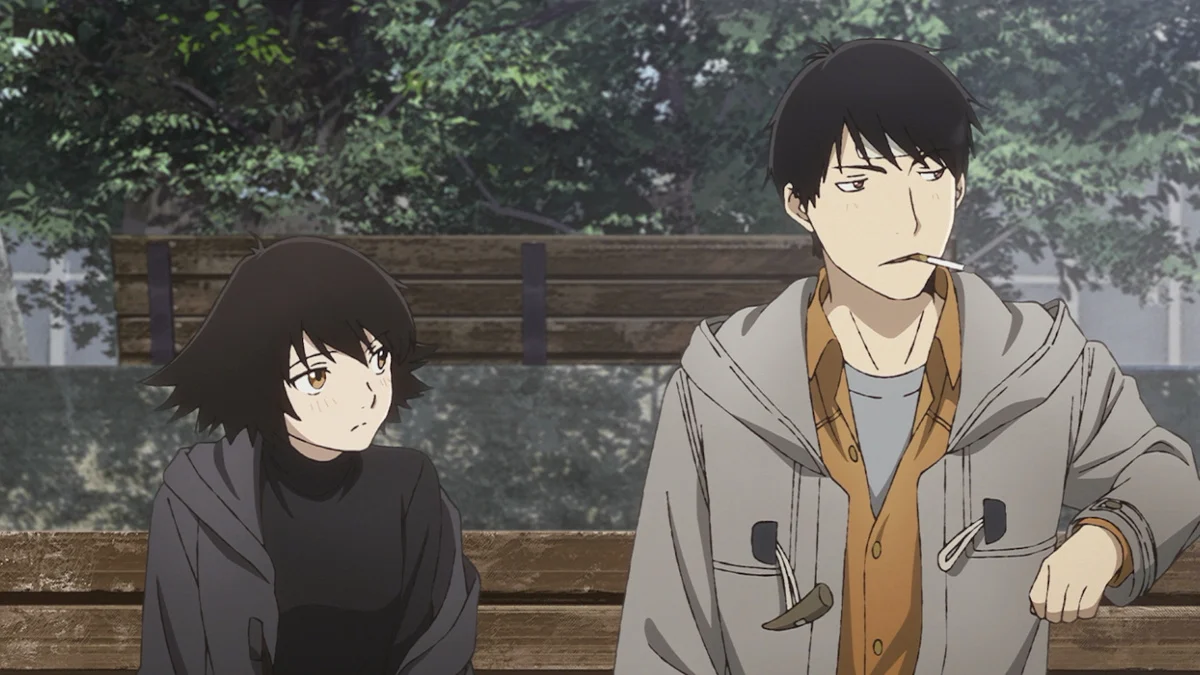
Sing ‘Yesterday’ for Me offers a refreshing take on romance, presenting it in a remarkably realistic manner that sets it apart from many other anime in the genre. What sets it apart is its handling of the classic love triangle trope, taking it in unexpected directions by the end of the series. Without spoiling anything, the conclusion is immensely satisfying, demonstrating how failed romances can still evolve into strong friendships.
Directed by Yoshiyuki Fujiwara, known for his work on popular anime like Attack on Titan and Sword Art Online,Sing ‘Yesterday’ for Me showcases his versatility as a director. It’s impressive to see him transition seamlessly to a series that diverges significantly in tone and style from his previous works, yet still maintains a high level of mastery in storytelling and character development.
“Sing ‘Yesterday’ for Me” (Japanese: “Yesterday wo Utatte”) is a Japanese manga series written and illustrated by Kei Toume. The manga was serialized in Shueisha’s Business Jump magazine from 1997 to 2011 and was later compiled into 11 tankobon volumes. In 2020, the series was adapted into an anime television series by Doga Kobo, bringing its poignant story and complex characters to a broader audience.
“Sing ‘Yesterday’ for Me” is a character-driven slice-of-life drama that goes into themes of love, loss, and the uncertainty of young adulthood. The story is set in Tokyo and follows the lives of several young adults who are grappling with their pasts and searching for meaning in their lives.
The protagonist, Rikuo Uozumi, is a university graduate who has drifted into a part-time job at a convenience store, feeling aimless and unmotivated. His life takes a turn when he reconnects with Shinako Morinome, his college crush, and meets Haru Nonaka, a quirky and energetic girl with a pet crow who harbors feelings for him.
The series explores the evolving relationships between these characters and others in their circle, capturing the quiet struggles and small triumphs of everyday life.
Rikuo Uozumi: The central character, Rikuo is a disillusioned young man who feels stuck in a rut after graduating from university. His interactions with Shinako and Haru challenge him to confront his feelings and aspirations, pushing him toward personal growth and self-discovery.
Haru Nonaka: A free-spirited and eccentric girl, Haru is a high school dropout who works at a bar. She has a pet crow named Kansuke and is unabashedly in love with Rikuo. Despite her outward cheerfulness, Haru has her own emotional scars and complexities, making her a compelling and multi-dimensional character.
Shinako Morinome: Rikuo’s former college classmate and the object of his unrequited love, Shinako is a high school teacher who is still grieving the loss of her first love, Yū, who died young. Her inability to move on from the past complicates her relationships with both Rikuo and Rou.
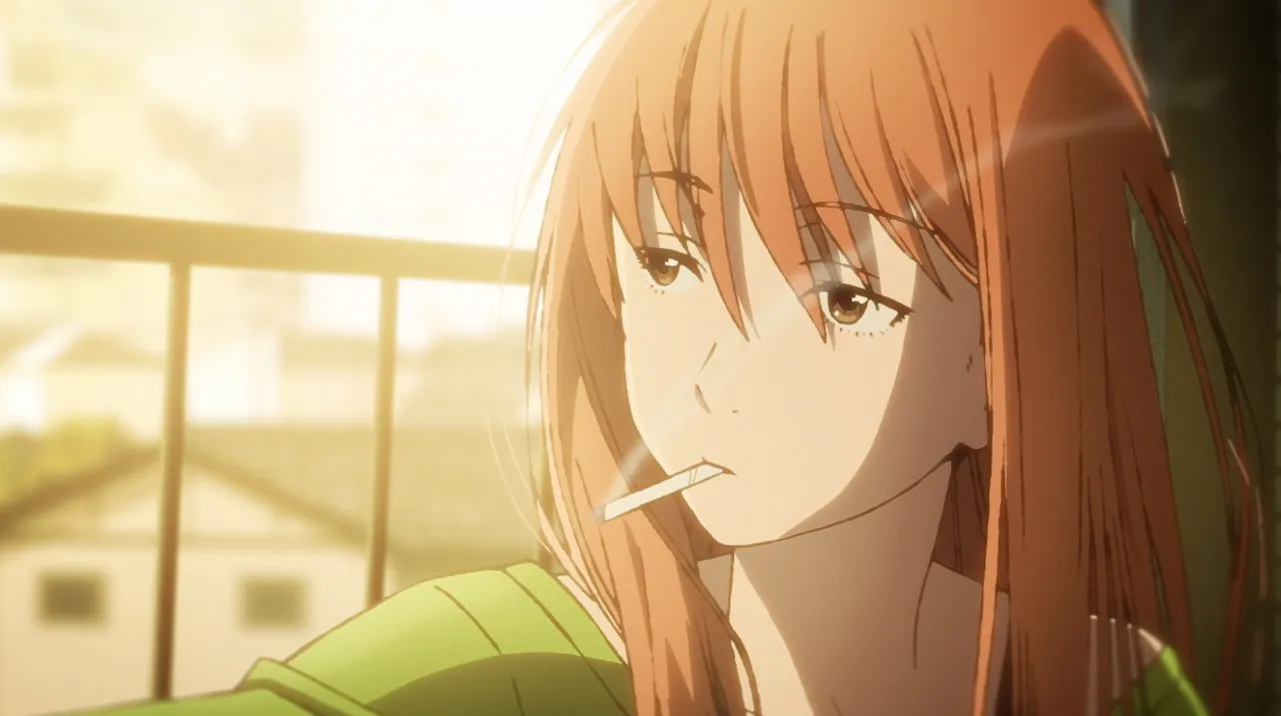
Rou Hayakawa: The younger brother of Shinako’s deceased first love, Rou is a passionate art student who harbors feelings for Shinako. His presence adds tension and depth to the story, as he represents both a link to Shinako’s past and a potential future.
Sing ‘Yesterday’ for Me deeply explores the theme of unrequited love, with multiple characters experiencing feelings that are not reciprocated. The series portrays the pain, longing, and growth that come from such experiences, highlighting the complexities of human emotions.
The theme of loss is central to the narrative, particularly through Shinako’s character. Her struggle to move on from her first love’s death and the impact it has on her current relationships is a poignant aspect of the story. The series sensitively handles the process of grieving and the difficulty of opening up to new possibilities.
The characters in “Sing ‘Yesterday’ for Me” are in a transitional phase of their lives, facing the uncertainties of young adulthood. The series explores their journeys of self-discovery, personal growth, and the search for purpose and direction in life.
The manga and anime are grounded in the slice-of-life genre, focusing on the everyday experiences and interactions of the characters. The realistic portrayal of mundane activities and the subtle depiction of emotions create a deeply immersive and relatable narrative.
Kei Toume’s artwork is distinctive and expressive, capturing the nuanced emotions of the characters and the atmosphere of the settings. The detailed backgrounds and realistic character designs enhance the authenticity of the story. The anime adaptation by Doga Kobo stays true to the manga’s visual style, with careful attention to character expressions and mood-setting scenes.
The anime’s music, composed by Kenji Tamai, complements the melancholic and reflective tone of the series. The opening theme, “Kago no Naka ni Tori” by Yourness, and the ending theme, “Aoibashi” by Sayuri, the emotional depth and introspective nature of the story. The soundtrack plays a significant role in enhancing the viewing experience, adding layers of emotion to key moments.
“Sing ‘Yesterday’ for Me” has been praised for its mature storytelling, complex characters, and realistic portrayal of emotions. The manga has garnered a dedicated fanbase and critical acclaim for its thoughtful exploration of love and loss. The anime adaptation introduced the story to a wider audience, receiving positive reviews for its faithful adaptation and emotional resonance.
“Sing ‘Yesterday’ for Me” is a beautifully crafted series that offers a profound and introspective look at love, loss, and the journey of self-discovery. Its well-developed characters and realistic storytelling create a deeply engaging and relatable narrative.
Whether experienced through the original manga or the anime adaptation, “Sing ‘Yesterday’ for Me” is a must-read/watch for fans of slice-of-life dramas and those who appreciate thoughtful, character-driven stories.
7. Shikimori’s Not Just a Cutie
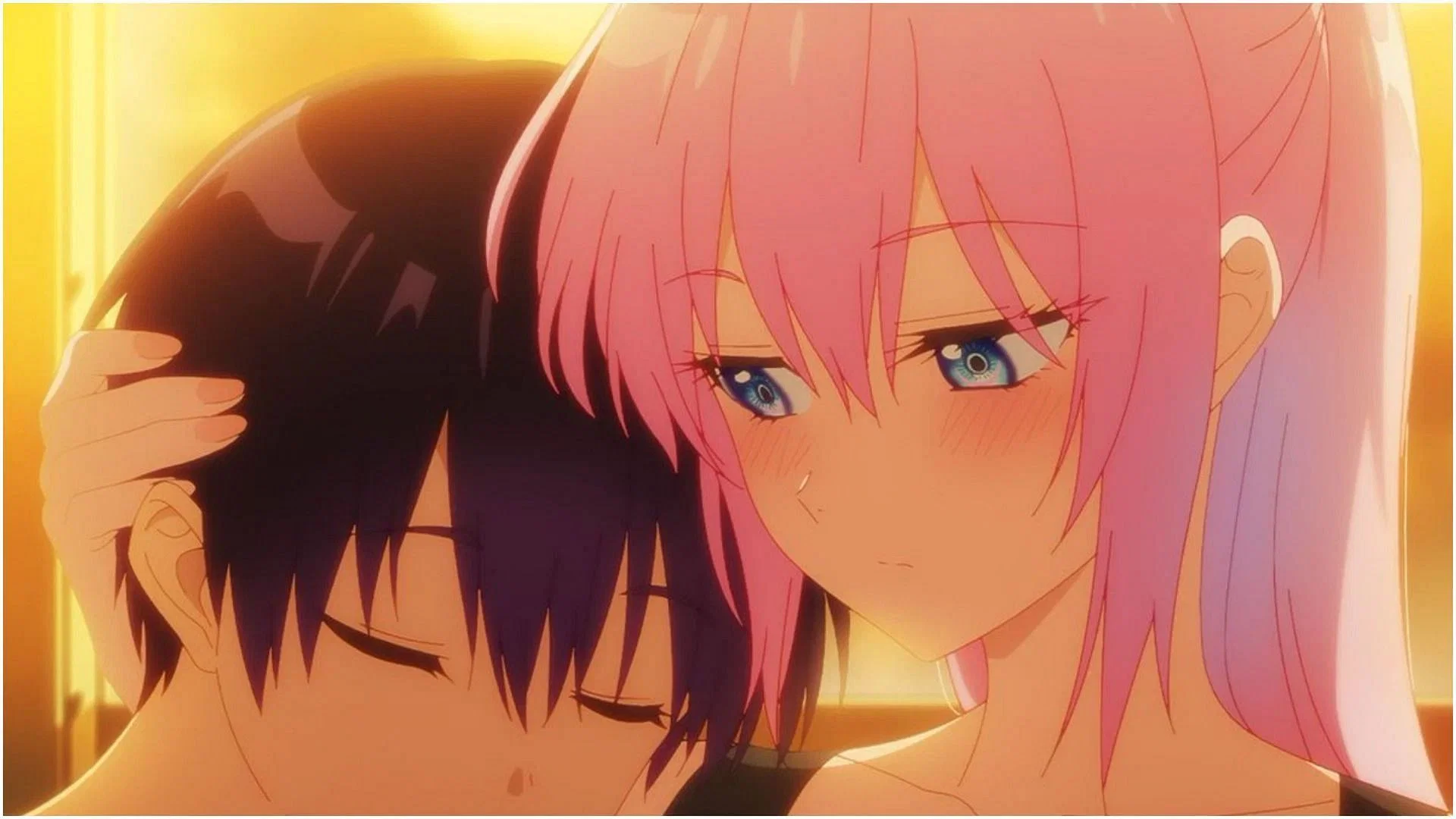
Labeling Shikimori’s Not Just a Cutie as a standout might stir some debate, given the mixed response it garnered upon its debut in the Spring 2022 season. Positioned as the new My Dress-Up Darling by Doga Kobo, the series was burdened with expectations it never purported to meet.
In reality, it’s a slice-of-life anime with a central focus on a couple, Shikimori and Yuu Izumi, who undeniably share adorable moments together. Unlike many anime, Shikimori’s Not Just a Cutie starts with the main couple already in a relationship, instantly setting it apart.
While individual episodes may not offer much in terms of action, collectively they weave a heartwarming narrative of young love, portraying two endearing characters navigating the nuances of romance. It’s a refreshing departure from the norm, offering viewers a wholesome look into the evolving dynamics of a budding relationship.
“Shikimori’s Not Just a Cutie” (Japanese: “Kawaii dake ja Nai Shikimori-san”) is a Japanese romantic comedy manga series written and illustrated by Keigo Maki. The manga began serialization on Kodansha’s Magazine Pocket website and app in February 2019 and has since been compiled into multiple tankobon volumes.
Its charming characters, a blend of comedy and romance, and a unique twist on typical gender roles have garnered a dedicated following. The series was also adapted into an anime, which aired in 2022, further expanding its fanbase.
The story centers around high school student Yuu Izumi and his girlfriend, Micchon Shikimori. Yuu is a kind-hearted but extremely unlucky boy who frequently finds himself in unfortunate situations. Despite his misfortune, Yuu remains cheerful and optimistic, largely thanks to his relationship with Shikimori.
Shikimori, on the other hand, is not just the “cute” girlfriend one might expect. While she certainly has a sweet and adorable side, she also possesses a cool, confident, and protective persona that emerges, particularly when Yuu is in trouble. This duality is central to her character and the series’ charm, as it subverts the typical gender dynamics often seen in romance stories.
The series follows the everyday lives of Yuu and Shikimori as they navigate the ups and downs of high school life, their relationship, and the challenges that come with Yuu’s bad luck. Their interactions are heartwarming and humorous, showcasing a loving relationship built on mutual respect and admiration.
Yuu Izumi: The male protagonist, Yuu is a high school student known for his extreme bad luck. Despite this, he remains positive and deeply cares for Shikimori. His clumsiness and the situations it leads to often become comedic highlights of the series.
Micchon Shikimori: The female lead, Shikimori is Yuu’s girlfriend and the series’ titular character. She is known for her stunning beauty and cuteness, but she also has a “cool” side that is revealed when she protects Yuu from various mishaps. Shikimori’s duality is a central theme, as she seamlessly switches from being adorable to fiercely protective.
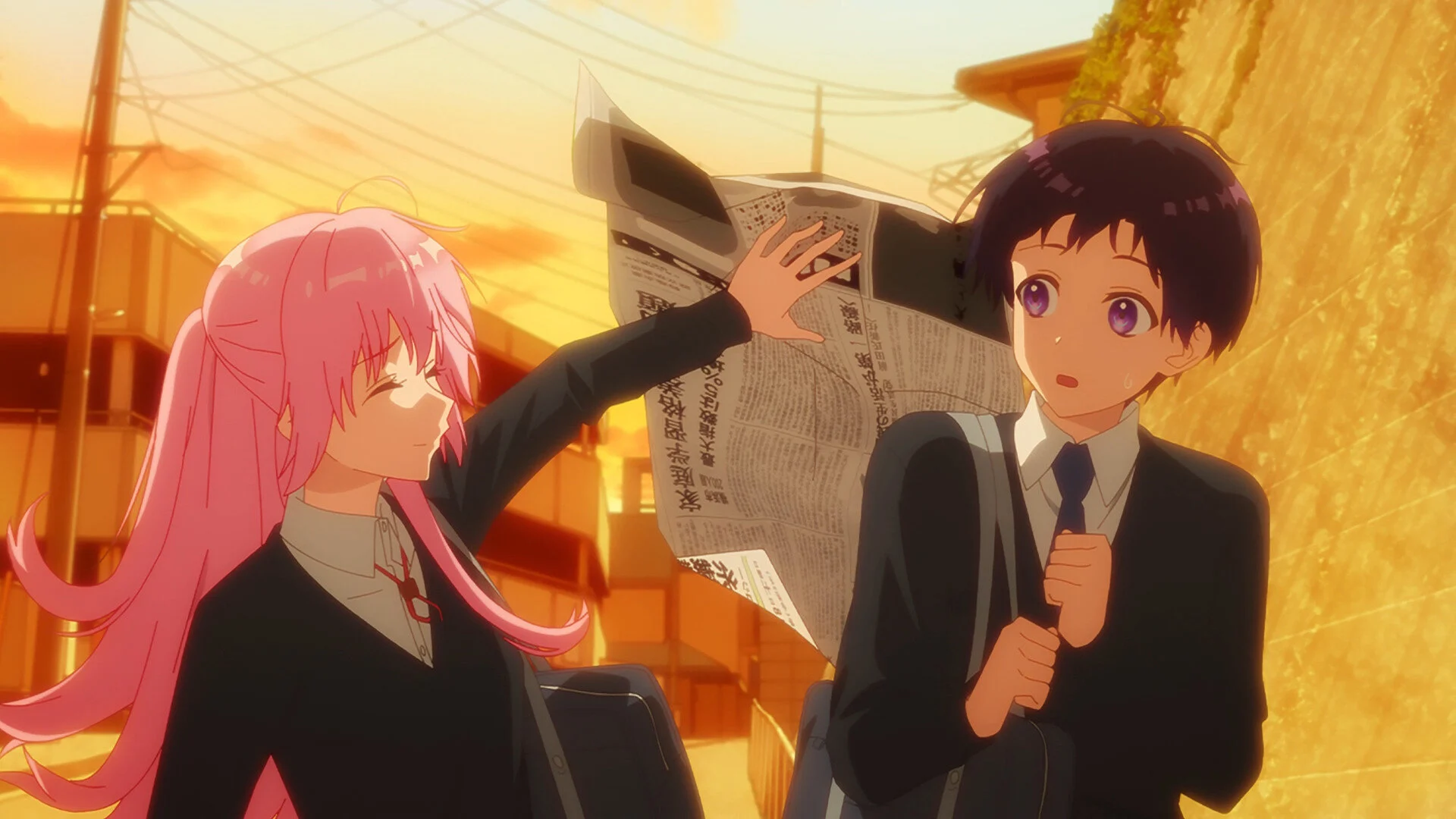
Kyo Nekozaki: A friend of Yuu and Shikimori, Kyo is energetic and outgoing. She often provides comic relief and supports Shikimori in her efforts to protect Yuu. Kyo’s lively personality adds a fun dynamic to the group.
Sho Inuzuka: Another friend of Yuu and Shikimori, Sho is calm and dependable. He often acts as a voice of reason within the group and provides a steady presence amidst the chaos that Yuu’s bad luck brings.
Yui Hachimitsu: The quiet and observant member of the group, Yui offers dry, often sarcastic commentary on the events around her. Her insights and deadpan humor add depth and a different comedic angle to the series.
One of the most notable aspects of “Shikimori’s Not Just a Cutie” is its subversion of traditional gender roles. Shikimori often takes on the protective role typically reserved for male characters in romance series, while Yuu is the one who needs saving. This twist adds a refreshing dynamic to their relationship and the genre as a whole.
The series expertly balances comedic moments with heartwarming romantic scenes. Yuu’s bad luck provides a constant source of humor, while Shikimori’s protective instincts and their mutual affection create many tender moments. The interplay between these elements keeps the story engaging and emotionally resonant.
The characters in “Shikimori’s Not Just a Cutie” are well-developed and multi-dimensional. Shikimori’s dual nature and Yuu’s positive outlook despite his misfortunes are explored in depth, making them relatable and endearing. The supporting characters also add richness to the narrative, each contributing their unique personalities to the group’s dynamic.
At its core, the series is a slice-of-life story that explores the everyday lives and relationships of its characters. It highlights the small, yet significant moments that define their interactions and growth, creating a narrative that feels both intimate and realistic.
Keigo Maki’s artwork is a significant strength of the series. The character designs are expressive and detailed, capturing the nuances of their personalities and emotions. Shikimori’s transformation from cute to cool is particularly well-illustrated, emphasizing the dual aspects of her character. The backgrounds and settings are also meticulously drawn, adding to the aesthetic appeal of the manga.
The anime adaptation of “Shikimori’s Not Just a Cutie” was produced by Doga Kobo and aired in 2022. The anime faithfully adapts the manga’s story and characters, bringing the vibrant world and charming interactions to life with fluid animation and a fitting soundtrack. The voice acting adds another layer of depth to the characters, enhancing the emotional impact of the story.
“Shikimori’s Not Just a Cutie” has been well-received by both readers and viewers for its unique approach to romance and comedy. The subversion of gender roles, combined with its endearing characters and humorous narrative, has earned the series a dedicated fanbase. Critics and fans alike have praised its refreshing take on the genre and its ability to blend heartfelt moments with comedic relief seamlessly.
“Shikimori’s Not Just a Cutie” is a delightful and heartwarming series that stands out in the romantic comedy genre for its unique characters and subversion of traditional roles. With its blend of humor, romance, and everyday life, it offers a refreshing and engaging narrative that resonates with a wide audience.
Whether experienced through the manga or the anime adaptation, “Shikimori’s Not Just a Cutie” provides a charming and entertaining story that celebrates love, companionship, and the joys of everyday life.
6. Bakemonogatari
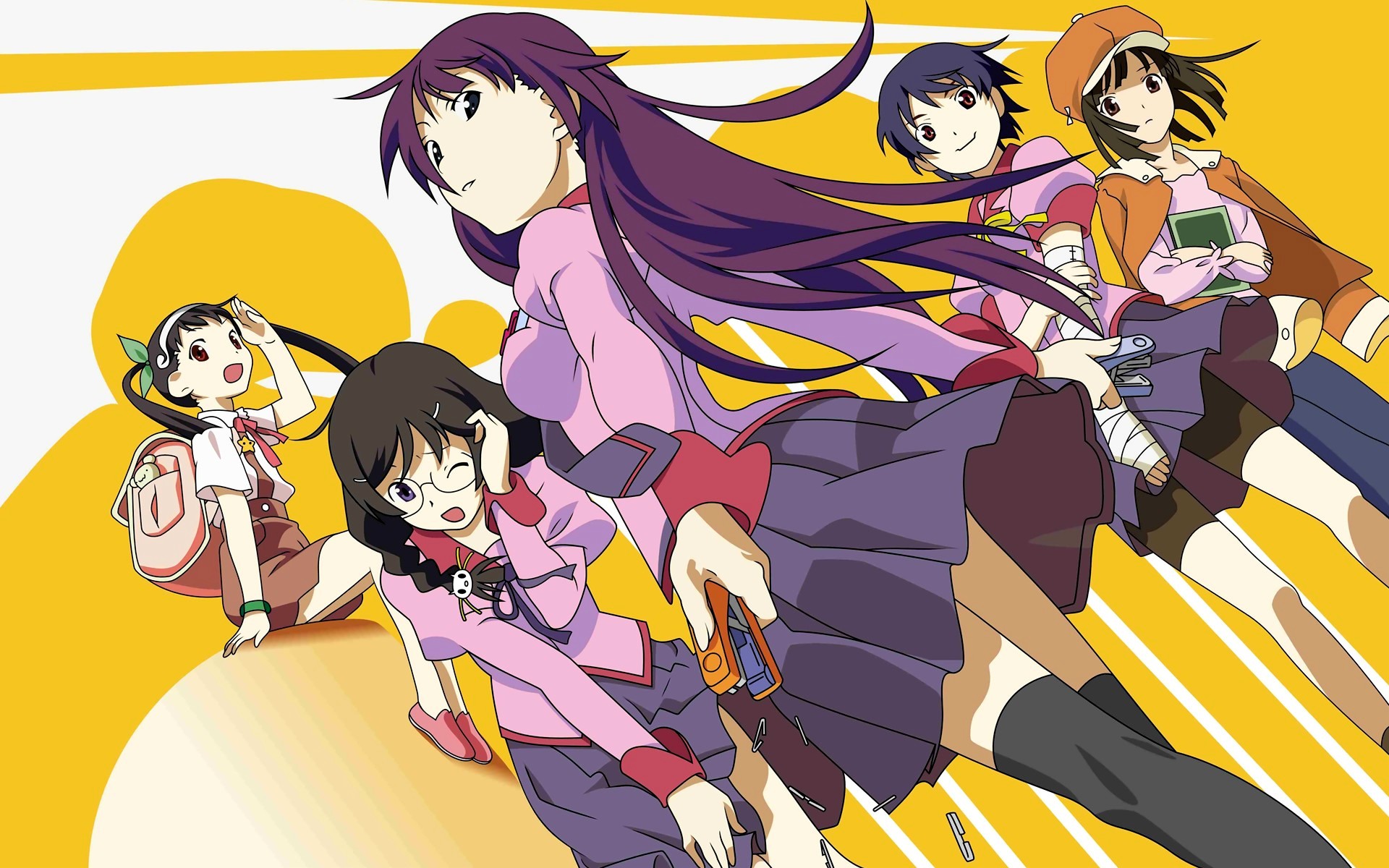
It might be a bit of a stretch to label Bakemonogatari as a straightforward romance, but this season of Monogatari certainly puts the spotlight on the evolving relationship between Koyomi Araragi and Hitagi Senjougahara.
Their dynamic is anything but conventional, starting with an encounter involving a stapler to the face. However, as the story unfolds, Araragi’s unwavering determination to assist Senjougahara with her curse brings them closer together.
Despite the inherent weirdness that defines the Monogatari series, the romance between Araragi and Senjougahara is surprisingly healthy. They complement each other perfectly, and amidst the introduction of numerous other female characters who could potentially form a harem, their relationship remains steadfast.
“Bakemonogatari” (化物語) is a Japanese light novel series written by Nisio Isin and illustrated by VOFAN. It is the first part of the larger “Monogatari” series, which has entertained audiences with its unique blend of supernatural themes, intricate dialogue, and character-driven storytelling. The “Monogatari” series is known for its unconventional narrative style, combining elements of mystery, romance, and the supernatural.
The story of “Bakemonogatari” follows Koyomi Araragi, a high school student who survives a vampire attack and becomes partly transformed into a vampire himself. Although he manages to regain most of his humanity, he retains some vampire abilities, such as enhanced healing. The series begins with Koyomi encountering various girls who are afflicted by different kinds of oddities (supernatural phenomena), and his efforts to help them.
The setting is a modern-day Japan where these supernatural occurrences are hidden beneath the surface of everyday life. Each arc in “Bakemonogatari” is named after the particular oddity affecting a character, providing a structure that explores their backgrounds and the nature of their afflictions.
Koyomi Araragi: The protagonist, a third-year high school student who is partly a vampire. He is kind-hearted and selfless, always willing to help those in need. His encounters with various girls and their oddities drive the narrative forward.
Hitagi Senjougahara: The first girl Koyomi helps, who is afflicted by a weight-crab that makes her weightless. She is sharp-tongued and has a strong personality. As the series progresses, she becomes Koyomi’s girlfriend, adding a layer of romantic development to the story.
Mayoi Hachikuji: A young girl who is a lost snail (a wandering spirit). She can only be seen by people who are lost themselves. Her interactions with Koyomi are both humorous and poignant, exploring themes of loss and direction.
Suruga Kanbaru: A junior in Koyomi’s school, she is afflicted by a rain devil in the form of a monkey’s paw, which grants her immense physical strength at a cost. Her story goes into themes of desire and regret.
Nadeko Sengoku: A shy girl cursed by a snake spirit, causing her immense physical pain. Her arc addresses the darker aspects of adolescence and unrequited love.
Tsubasa Hanekawa: Koyomi’s classmate and the class representative, who becomes possessed by a cat spirit that amplifies her negative emotions. Her story is pivotal, dealing with the duality of human nature and repressed feelings.

Bakemonogatari is renowned for its intricate blending of supernatural occurrences with deep psychological themes. Each character’s oddity serves as a metaphor for their personal struggles and internal conflicts, offering a rich, layered narrative.
The series is heavily dialogue-driven, with witty, rapid-fire exchanges that reveal character depth and advance the plot. Nisio Isin’s writing style is characterized by its clever wordplay and philosophical undertones.
The characters in “Bakemonogatari” are complex and multi-dimensional. Their development is intricately tied to the supernatural elements of the story, creating a compelling narrative that explores their growth and transformations.
The oddities in the series often symbolize deeper issues, such as trauma, emotional baggage, and personal demons. This use of symbolism adds a layer of depth to the storytelling, encouraging viewers to think critically about the narrative.
The “Monogatari” series, including “Bakemonogatari,” is animated by Shaft and directed by Akiyuki Shinbo. The animation style is distinctive, featuring avant-garde visuals, abstract imagery, and frequent use of text on screen. The series employs a unique visual language that complements its unconventional narrative style, with creative camera angles, stark color contrasts, and artistic backgrounds.
VOFAN’s illustrations in the light novels are equally striking, characterized by their sharp lines, vivid colors, and ethereal quality, capturing the surreal and otherworldly atmosphere of the series.
The soundtrack of “Bakemonogatari” is composed by Satoru Kosaki, known for his work on “The Melancholy of Haruhi Suzumiya” and other popular anime. The music enhances the series’ atmosphere, with each arc featuring its own distinct opening theme sung by the voice actress of the character the arc focuses on.
The ending theme, “Kimi no Shiranai Monogatari” by Supercell, has become iconic, perfectly encapsulating the series’ blend of melancholy and mystery.
“Bakemonogatari” has been highly acclaimed for its unique storytelling, complex characters, and artistic animation. It has a strong fanbase and has influenced many other works within the anime and light novel industries. Critics and audiences alike praise its ability to blend supernatural elements with deep, character-driven narratives, making it a standout series in modern anime.
The series has also been successful commercially, with high sales of both the light novels and anime Blu-rays. Its popularity has led to numerous sequels and adaptations, expanding the “Monogatari” series into a well-regarded franchise.
“Bakemonogatari” is a masterful blend of supernatural drama, romance, and psychological exploration. Its distinctive narrative style, rich character development, and innovative visual presentation make it a standout in anime and light novels.
Whether you are drawn to its witty dialogue, complex characters, or the intricate interplay between the supernatural and the psychological, “Bakemonogatari” offers a unique and deeply engaging experience. For fans of character-driven stories with a touch of the surreal, “Bakemonogatari” is a must-watch.
5. My Happy Marriage
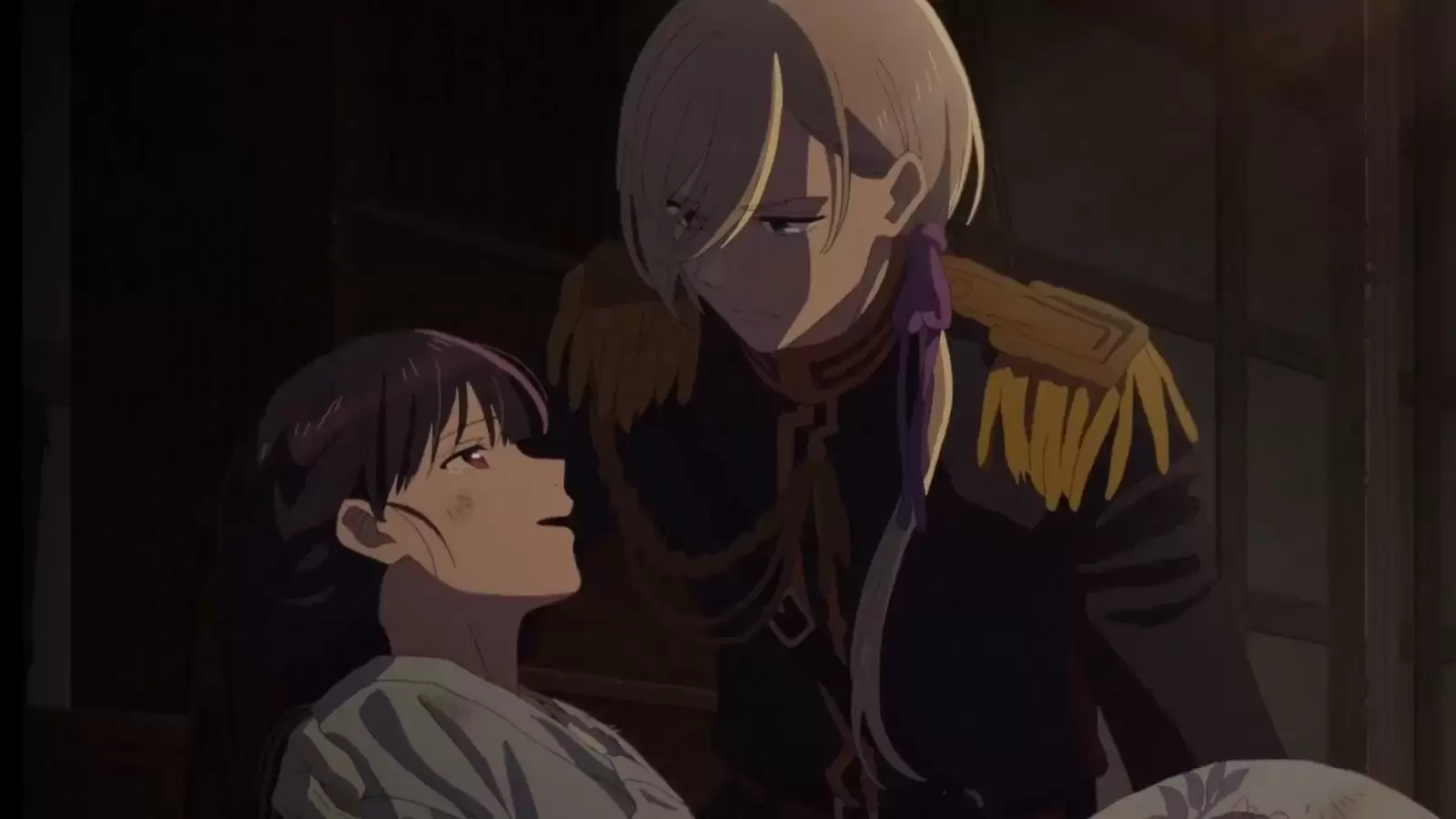
My Happy Marriage emerged as the standout romance anime of Summer 2023, offering a unique blend of historical setting and supernatural elements drawn from Akumi Agitogi’s novel series. Set against an alternative version of the Meiji Restoration era, the story follows Miyo, who endures a tumultuous existence under the oppressive rule of her stepmother, stepsister, and father.
When her family attempts to rid themselves of her by arranging a marriage with the notorious military figure Kiyoka, Miyo’s fate hangs in the balance. However, contrary to expectations, Kiyoka not only takes an interest in Miyo but becomes fascinated by her and incensed by her family’s mistreatment.
My Happy Marriage doesn’t shy away from depicting the lasting impact of Miyo’s abuse, portraying her journey toward healing and self-worth within the safety of Kiyoka’s care. Meanwhile, Kiyoka himself emerges as a complex character with hidden motives underlying his initial attraction to Miyo, although his genuine feelings for her gradually become apparent.
While the central romance between Miyo and Kiyoka is portrayed with sweetness and warmth, My Happy Marriage falls short in certain aspects. The inclusion of supernatural elements can sometimes feel discordant, and the antagonists, while detestable, lack depth beyond their villainous roles. Despite these shortcomings, the anime offers a compelling and heartwarming exploration of love and resilience amidst adversity.
“My Happy Marriage” (Japanese: “Watashi no Shiawase na Kekkon”) is a Japanese light novel series written by Akumi Agitogi and illustrated by Tsukiho Tsukioka. The series combines elements of historical fiction, romance, and fantasy, creating a rich narrative that has entertained readers.
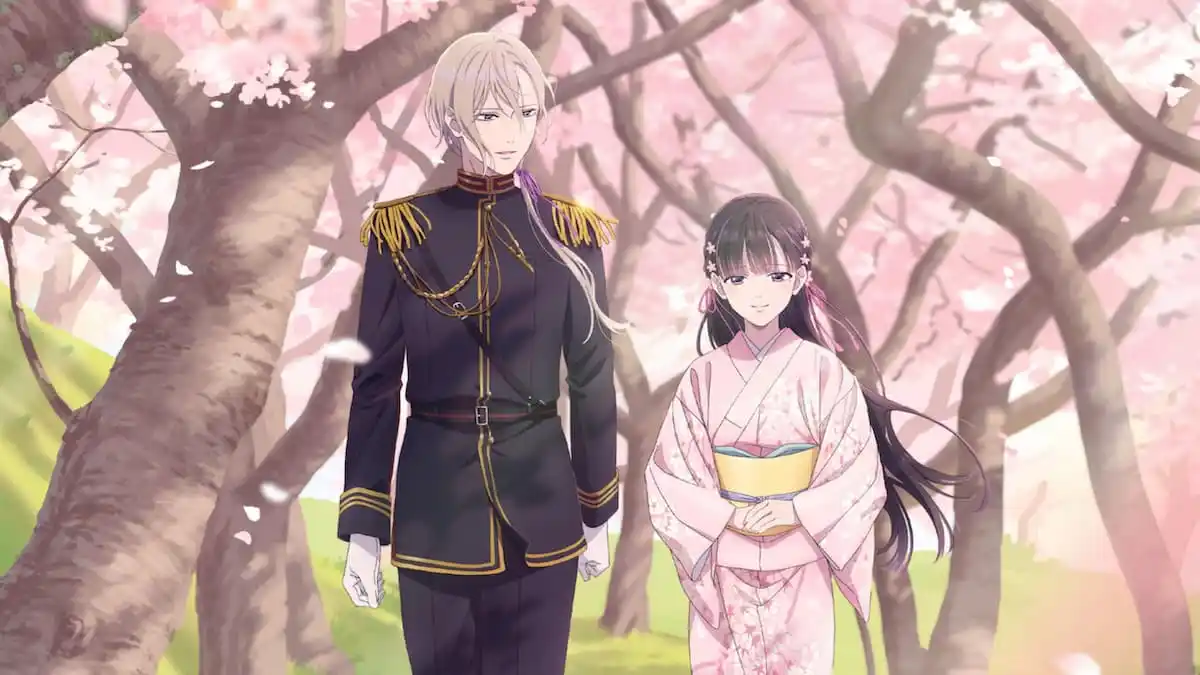
The light novel began serialization on the novel publishing website Shōsetsuka ni Narō in 2018, and it has since been published by Fujimi L Bunko with illustrations by Tsukiho Tsukioka. It has also been adapted into a manga series and an anime, further expanding its reach and popularity.
The story is set in a fictionalized version of Meiji-era Japan, a period marked by rapid modernization and cultural change. It follows the life of Miyo Saimori, a young woman born into a prestigious family that possesses supernatural abilities.
Despite her noble birth, Miyo is treated poorly by her stepmother and stepsister after the death of her mother. She is considered talentless and worthless because she does not seem to have inherited any supernatural abilities.
Miyo’s life takes a significant turn when she is arranged to marry Kiyoka Kudou, a powerful and cold-hearted military officer known for his harsh treatment of previous fiancées. Expecting a life of continued misery, Miyo is surprised to find that Kiyoka is not as cruel as the rumors suggest.
Instead, he is a man who has been misunderstood and hurt by betrayal. As Miyo and Kiyoka begin to understand each other, their relationship slowly transforms into a genuine and deep bond.
Miyo Saimori: The protagonist of the series, Miyo is a gentle and kind-hearted young woman who has endured years of neglect and abuse from her family. Despite her harsh upbringing, she remains resilient and hopeful. Her marriage to Kiyoka becomes a journey of self-discovery and healing, as she learns to value herself and open her heart to love.
Kiyoka Kudou: A powerful and enigmatic military officer, Kiyoka is known for his cold demeanor and exceptional supernatural abilities. Initially perceived as unapproachable and harsh, he reveals a more caring and protective side as he gets to know Miyo. His relationship with Miyo allows him to confront his own past and learn to trust and love again.

Yurie: The loyal and supportive maid in Kiyoka’s household, Yurie quickly becomes a friend and confidante to Miyo. She provides much-needed warmth and understanding, helping Miyo adjust to her new life.
Kanoko Saimori: Miyo’s stepsister, who enjoys a privileged life at the expense of Miyo. She is a key figure in the abuse and mistreatment Miyo endures, driven by jealousy and a sense of superiority.
Minoru Tatsuishi: A secondary character who serves as a potential rival and obstacle in Miyo and Kiyoka’s relationship. His presence adds tension and complexity to the storyline.
One of the central themes of “My Happy Marriage” is overcoming adversity. Miyo’s journey from a life of abuse and neglect to finding love and happiness is a powerful narrative of resilience and personal growth. The series explores how love and kindness can heal deep emotional wounds and transform lives.
Both Miyo and Kiyoka undergo significant personal growth throughout the story. Miyo learns to see her own worth and gains confidence, while Kiyoka learns to trust and open his heart to others. Their relationship is a catalyst for their mutual development.
The setting of Meiji-era Japan, combined with the presence of supernatural abilities, adds a unique and intriguing backdrop to the story. The historical context provides a rich cultural atmosphere, while the supernatural elements introduce mystery and excitement.
The romance between Miyo and Kiyoka is the heart of the story. It is a slow-burning and deeply emotional journey that highlights the healing power of love. Their relationship is depicted with sensitivity and depth, making it both believable and heartwarming.
The illustrations by Tsukiho Tsukioka in the light novels are beautifully detailed, capturing the historical setting and the emotional nuances of the characters. The manga adaptation further brings the story to life with expressive artwork that highlights the characters’ emotions and the period’s aesthetics.
The anime adaptation, produced by Kinema Citrus, faithfully translates the story and characters into a visual format. The animation quality is high, with meticulous attention to the historical details and the supernatural elements. The character designs remain true to the original illustrations, and the voice acting adds depth to the characters, enhancing their personalities and emotional journeys.
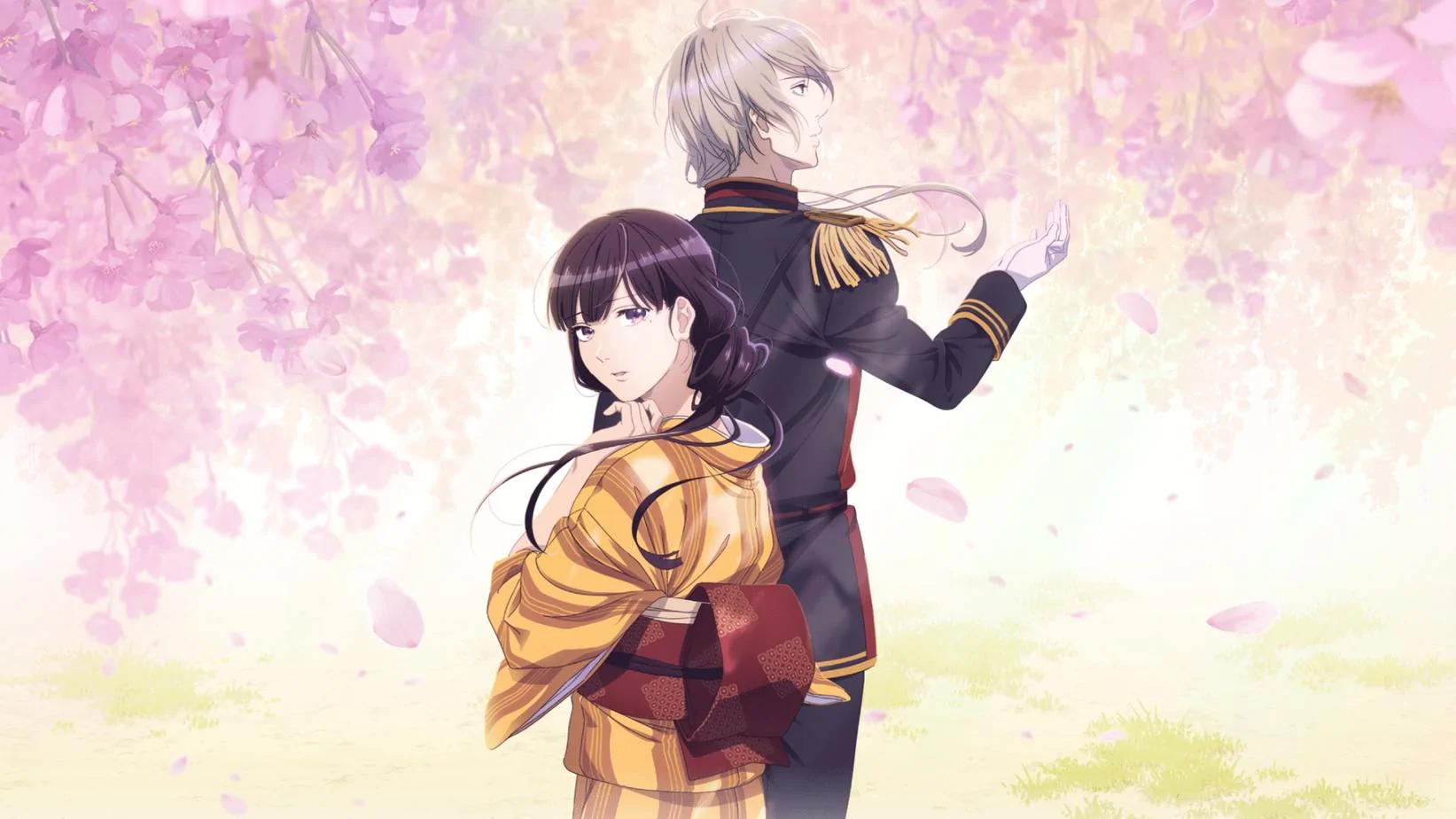
“My Happy Marriage” has been well-received by both critics and audiences for its heartfelt storytelling, complex characters, and beautiful art. The series has been praised for its sensitive portrayal of trauma and healing, as well as its compelling romance. It has garnered a dedicated fanbase and has been lauded as a standout in the genres of historical fiction and romantic fantasy.
The light novel series has sold well, and its adaptations into manga and anime have expanded its reach, introducing the story to a broader audience. The themes of resilience, personal growth, and the transformative power of love resonate deeply with readers and viewers, making it a memorable and impactful series.
“My Happy Marriage” is a poignant and beautifully crafted story that combines historical fiction, romance, and fantasy in a compelling narrative. Its exploration of overcoming adversity, personal growth, and the healing power of love is both touching and inspiring.
With richly developed characters, a unique setting, and a heartwarming romance, “My Happy Marriage” stands out as a deeply engaging and emotionally resonant series. Whether experienced through the light novels, manga, or anime, it offers a powerful and uplifting tale that will leave a lasting impression on its audience.
4. Wotakoi: Love is Hard for Otaku
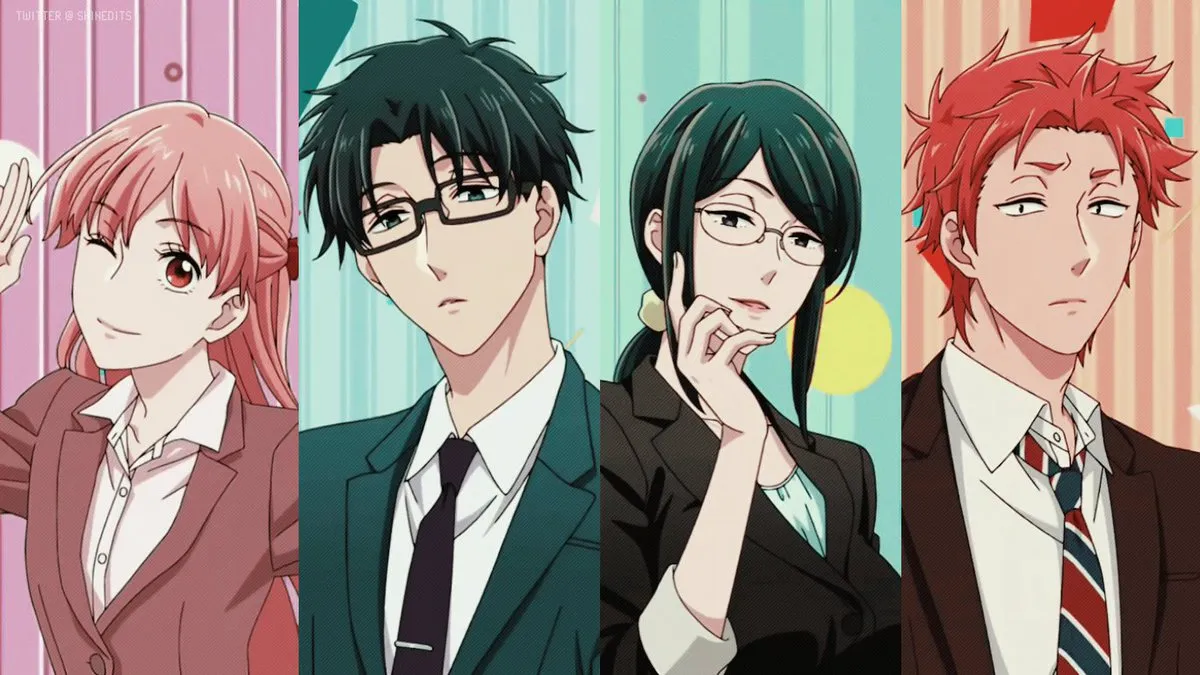
Although humor takes precedence over romance in Wotakoi, the relationships are depicted with a refreshing sense of realism, particularly in the case of Tarou and Hanako. Despite being childhood friends, Narumi’s uncertainty about seeing Hirotaka as a romantic partner remains a recurring theme throughout the series.
While the anime’s short length limits the depth of exploration into these relationships, Wotakoi: Love is Hard for Otaku remains an enjoyable and entertaining ride from start to finish. It offers a unique perspective on romance in the workplace and provides relatable insights into the challenges and joys of navigating relationships as adults.
“Wotakoi: Love is Hard for Otaku” (Japanese: “Wotaku ni Koi wa Muzukashii”) is a Japanese romantic comedy manga series written and illustrated by Fujita. The series started as a webcomic on Pixiv before being serialized in Ichijinsha’s Comic POOL digital manga magazine in 2015.
The popularity of the manga led to an anime adaptation in 2018 by A-1 Pictures, further solidifying its status as a beloved series among fans of romantic comedies and otaku culture.
“Wotakoi” follows the lives of four main characters who are both office workers and otakus (fans of specific interests, typically related to anime, manga, and gaming). The series is set in a contemporary Japanese workplace and explores the romantic and everyday lives of these characters, highlighting the unique challenges and joys of dating as an otaku.
The story begins with Narumi Momose, a fujoshi (a fan of boys’ love manga), who starts a new job at an office after breaking up with her boyfriend who left her due to her otaku hobbies. She reunites with her childhood friend Hirotaka Nifuji, a hardcore gamer who works at the same company.
Realizing that they can be open about their hobbies with each other, Hirotaka proposes that they start dating, leading to a humorous and heartwarming exploration of their relationship.
Narumi Momose: The female protagonist, Narumi is a bubbly and energetic office worker who is deeply passionate about boys’ love manga. She is self-conscious about her otaku hobbies, often hiding them from others. Her relationship with Hirotaka allows her to embrace her true self more openly.
Hirotaka Nifuji: The male protagonist, Hirotaka is a quiet and stoic gamer who excels at his job. He has been in love with Narumi since childhood and is supportive of her hobbies. His calm and composed demeanor contrasts with Narumi’s more excitable personality.
Hanako Koyanagi: A fellow office worker and cosplayer, Hanako is a striking and confident woman who is dating Tarou Kabakura. She often acts as a mentor and big sister figure to Narumi, providing advice and support.
Tarou Kabakura: Hanako’s boyfriend and Hirotaka’s colleague, Tarou is a more traditional and somewhat grumpy individual who enjoys action manga. Despite his often argumentative relationship with Hanako, it is clear that they care deeply for each other.
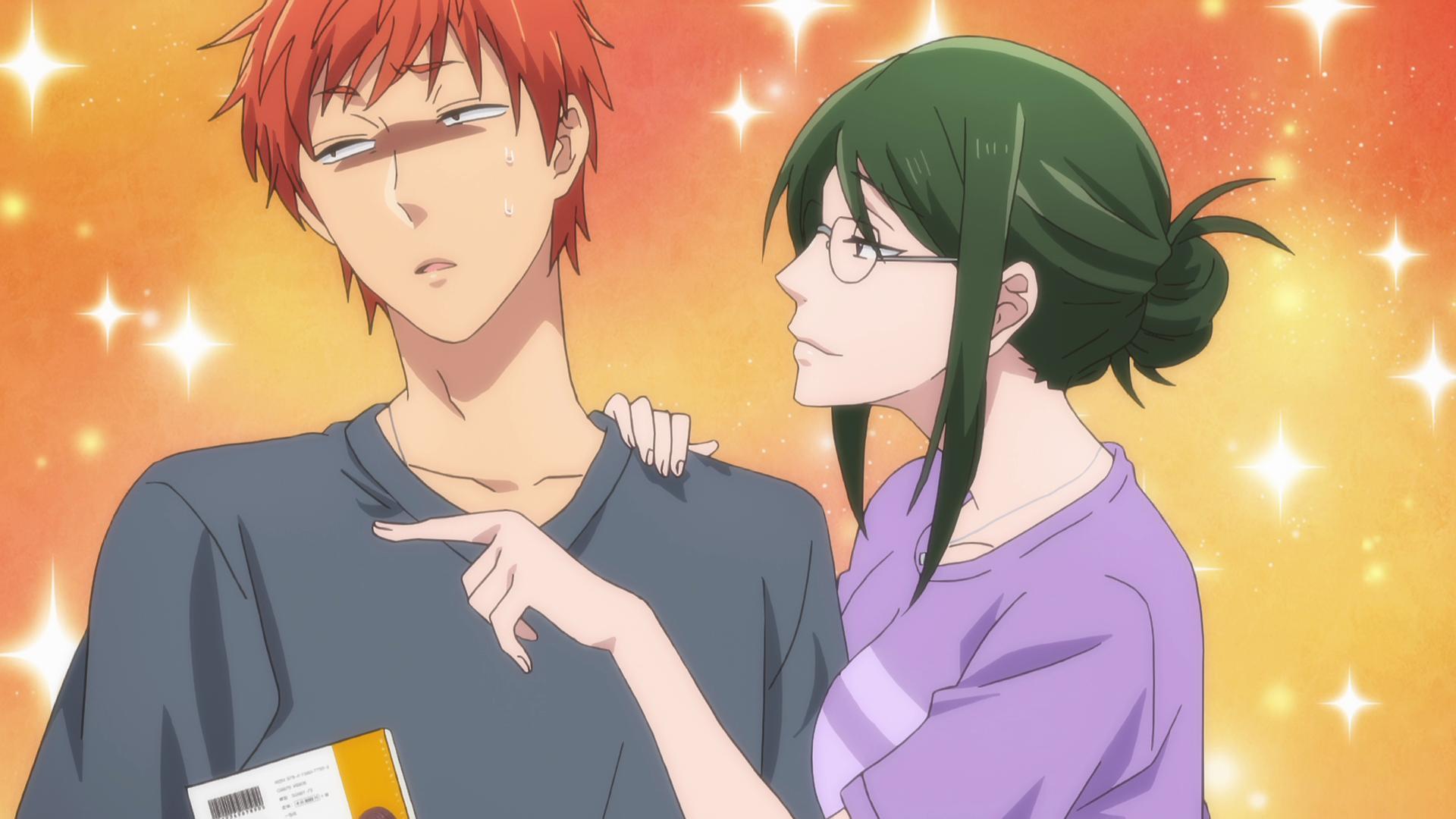
Wotakoi blends romantic comedy with otaku culture, creating a unique narrative that explores the challenges and joys of dating as an otaku. The series humorously depicts the characters’ interactions and their attempts to balance their professional lives with their passionate hobbies.
One of the strengths of “Wotakoi” is its portrayal of realistic relationships. The series goes into the dynamics of dating as adults, addressing issues such as communication, understanding, and compromise. The characters’ relationships are depicted with depth and authenticity, making their interactions relatable and endearing.
The workplace setting adds another layer to the story, highlighting the contrast between the characters’ professional personas and their private hobbies. This setting also allows for comedic situations where the characters navigate the expectations of their jobs while indulging in their otaku interests.
The series focuses on the development of its characters and their relationships. Narumi and Hirotaka’s relationship grows as they learn to support and understand each other better. Similarly, Hanako and Tarou’s relationship is explored in depth, showcasing their growth as a couple.
Fujita’s art style is clean and expressive, effectively capturing the characters’ emotions and the comedic timing of the series. The character designs are distinct and visually appealing, with each character’s personality reflected in their appearance. The manga often includes visual gags and references to otaku culture, adding to the humor and charm of the series.
The anime adaptation by A-1 Pictures faithfully translates the manga’s art style and humor into animation. The voice acting brings the characters to life, and the animation quality is consistently high, with vibrant colors and fluid movements. The opening theme, “Fiction” by Sumika, and the ending theme, “Kimi no Tonari” by halca, are both catchy and well-received, contributing to the anime’s appeal.
“Wotakoi” has been praised for its refreshing take on romantic comedy and its authentic depiction of otaku culture. The series resonates with fans who see themselves in the characters’ struggles and joys. Critics have lauded its humor, character development, and the balance it strikes between romance and comedy.
The manga has been commercially successful, with high sales and positive reviews. The anime adaptation has also been well-received, further boosting the series’ popularity. “Wotakoi” has become a cultural touchstone for many otakus, celebrating their interests and providing a narrative that acknowledges the complexities of balancing love and hobbies.
“Wotakoi: Love is Hard for Otaku” is a charming and relatable series that explores the intricacies of love and relationships through the lens of otaku culture. Its blend of humor, romance, and authentic character development makes it a standout in the romantic comedy genre.
Whether experienced through the manga or the anime, “Wotakoi” offers a heartwarming and entertaining look at the lives of otaku, celebrating their passions while delving into the challenges they face in love and life. For fans of romantic comedies and otaku culture, “Wotakoi” is a must-read and a must-watch.
3. Maid Sama
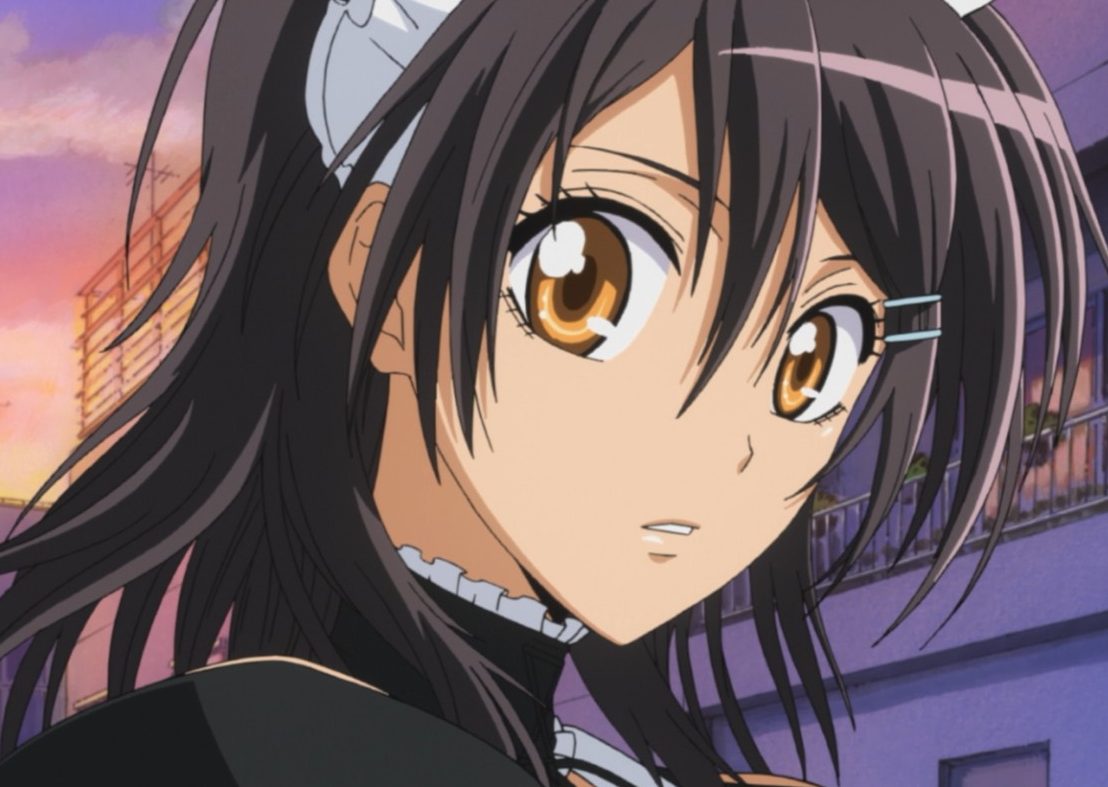
Maid Sama! may feature some clichéd tropes that would normally detract from a romance anime, such as the flawless male lead and the damsel-in-distress portrayal of the female protagonist. Additionally, the introduction of a love triangle adds little to the plot. However, despite these shortcomings, Maid Sama! manages to shine through its vibrant personality.
At its core, Maid Sama! centers around the dynamic between Takumi Usui, the charming heartthrob, and Misaki Ayuzawa, the strong-willed student council president. While Takumi navigates life with ease, Misaki must juggle her responsibilities at school, home, and work. When Takumi discovers Misaki’s part-time job at a maid cafe, it offers him a look into a different side of her personality.
Despite its flaws, Maid Sama! fascinates audiences with its engaging characters and lively interactions, making it a worthwhile watch for fans of romance anime.
“Maid Sama!” (Japanese: “Kaichou wa Maid-sama!”) is a Japanese shōjo manga series written and illustrated by Hiro Fujiwara. The series was serialized in Hakusensha’s “LaLa” magazine from 2005 to 2013, and it was later adapted into a 26-episode anime by J.C. Staff, which aired in 2010. “Maid Sama!” combines elements of romantic comedy and school life, and it has garnered a substantial fanbase for its engaging characters, humor, and heartwarming romance.
The story is set in Seika High School, a formerly all-boys school that has recently become co-ed. However, the school still has a predominantly male student body, and its reputation for being rough and disorderly persists. Enter Misaki Ayuzawa, the protagonist, who becomes the first female student council president.
Misaki is determined to reform Seika High and make it a better environment for female students. She is known for her strict and disciplined approach, earning the nickname “Demon President.”
However, Misaki harbors a secret that could undermine her authority: she works part-time at a maid café to support her family. Misaki goes to great lengths to keep this job hidden from her classmates, fearing it would ruin her tough image.
Her secret is jeopardized when Takumi Usui, the most popular and enigmatic boy at Seika High, discovers her working at the café. Instead of exposing her, Usui becomes fascinated by Misaki and starts to frequent the café, teasing and helping her along the way. This marks the beginning of a complex and evolving relationship between the two.
Misaki Ayuzawa: The protagonist, Misaki is a hardworking, determined, and fiercely independent girl. She excels academically and athletically, and she is deeply committed to her role as student council president. Despite her tough exterior, Misaki cares deeply for her friends and family. Her part-time job at the maid café reveals a softer, more vulnerable side of her.
Takumi Usui: The male lead, Usui is the most popular student at Seika High. He is handsome, athletic, and academically gifted, but also mysterious and aloof. Usui becomes interested in Misaki after discovering her secret and gradually falls in love with her. He often teases Misaki but is also protective and supportive, helping her out of difficult situations.
Sakura Hanazono and Shizuko Kaga: Misaki’s best friends at school. Sakura is cheerful and outgoing, while Shizuko is more reserved and studious. Both girls support Misaki in her efforts to improve Seika High and are later aware of her secret job.
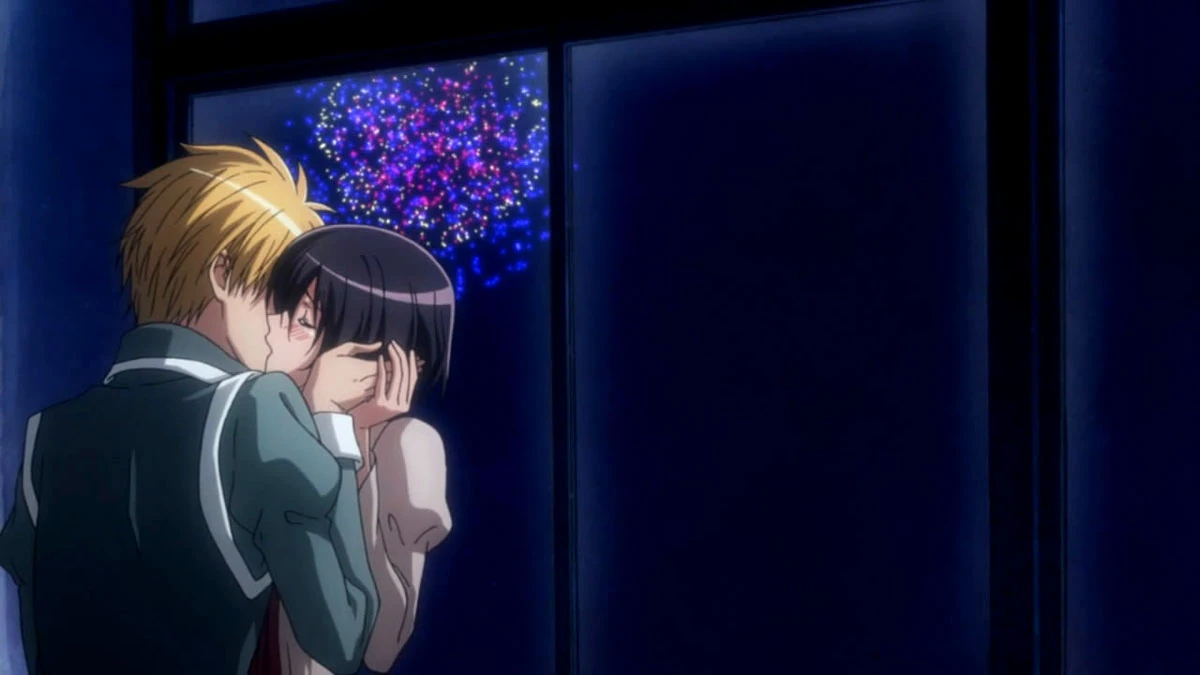
Satsuki Hyoudou: The manager of the maid café where Misaki works. Satsuki is cheerful and somewhat eccentric, with a deep love for all things cute. She is supportive of Misaki and often encourages her to embrace her femininity.
Hinata Shintani: Misaki’s childhood friend who transfers to Seika High. Hinata is cheerful and kind-hearted, harboring a long-time crush on Misaki. His arrival adds a layer of complexity to Misaki’s relationship with Usui.
A central theme of “Maid Sama!” is the concept of dual lives and identity. Misaki’s struggle to maintain her tough exterior while working as a maid symbolizes the conflict between her public and private selves. This theme is explored through her interactions with Usui, who sees and accepts both sides of her.
The series skillfully builds romantic tension between Misaki and Usui. Their relationship evolves from antagonistic banter to mutual respect and deep affection. Usui’s unwavering support and Misaki’s gradual realization of her feelings are portrayed with humor and emotional depth.
“Maid Sama!” addresses gender roles and expectations, particularly in the context of Misaki’s efforts to reform a predominantly male school. Misaki challenges traditional gender norms through her leadership and strength, while her job at the maid café highlights societal expectations of femininity.
The series balances humor with heartfelt moments. The comedic elements often stem from Misaki’s attempts to keep her secret and Usui’s playful teasing. These lighthearted moments are counterbalanced by genuine emotional development and touching scenes.
Hiro Fujiwara’s art style is clean and expressive, capturing both the humor and the emotional nuances of the story. The character designs are distinct and appealing, with detailed attention to facial expressions and body language that convey the characters’ personalities and emotions.
The anime adaptation by J.C. Staff maintains the essence of the manga with vibrant animation, fluid character movements, and a faithful adaptation of key scenes.
The voice acting is noteworthy, with Ayumi Fujimura bringing Misaki to life with her spirited performance, and Nobuhiko Okamoto delivering a charismatic and charming Usui. The opening theme, “My Secret” by Saaya Mizuno, and the ending themes add to the series’ charm and are well-loved by fans.
“Maid Sama!” has been well-received by both critics and audiences for its engaging characters, humor, and romance. It has been praised for its strong female lead and the dynamic between Misaki and Usui. The series has sold well in both manga and anime formats, with the anime adaptation introducing the story to a broader audience.
The relatable themes of balancing personal and public lives, as well as challenging societal expectations, resonate with many viewers. The chemistry between Misaki and Usui, combined with the series’ comedic elements, makes it a standout in the romantic comedy genre.
“Maid Sama!” is a delightful and engaging romantic comedy that explores themes of identity, gender roles, and the complexities of love. Its well-developed characters, humorous scenarios, and heartfelt moments make it a memorable and enjoyable series.
Whether experienced through the manga or the anime, “Maid Sama!” offers a charming and relatable story that resonates with fans of romantic comedies and school life dramas. The series’ blend of humor, romance, and social commentary ensures its place as a beloved classic in the shōjo genre.
2. The Pet Girl of Sakurasou
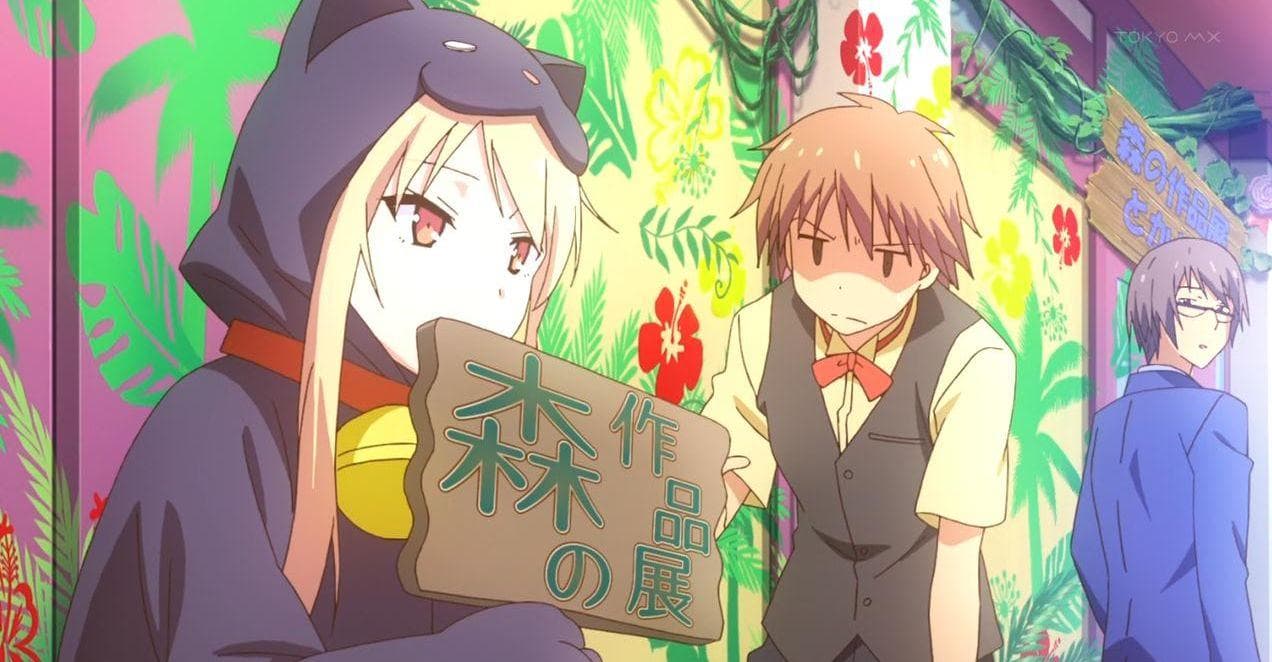
The Pet Girl of Sakurasou follows a quirky ensemble of characters on a journey of personal growth and self-discovery. When Sorata Kanda is ousted from his school’s prestigious dormitories, he finds himself reluctantly moving into the infamous Sakura House.
There, Sorata encounters a diverse cast of talented yet troubled students. His life takes an unexpected turn when he becomes responsible for helping a peculiar young artist adjust to dormitory life. As the series unfolds, it looks into the dynamics between the residents of Sakura House, their aspirations, and the intricate web of relationships that bind them together.
“The Pet Girl of Sakurasou” (Japanese: “Sakurasou no Pet na Kanojo”) is a Japanese light novel series written by Hajime Kamoshida and illustrated by Keeji Mizoguchi.
The series was serialized from 2010 to 2014, spanning ten volumes. It has been adapted into a manga series and a 24-episode anime by J.C. Staff, which aired from October 2012 to March 2013. “The Pet Girl of Sakurasou” is a blend of romantic comedy and drama, set against the backdrop of a unique high school dormitory.
The story is set at Suimei University of the Arts (Suiko), specifically in the dormitory known as Sakura Hall (Sakurasou), which houses students who are considered troublemakers or have peculiar personalities. The protagonist, Sorata Kanda, is a second-year student who ends up in Sakurasou after being caught with stray cats in his regular dormitory.
Sorata’s life takes a turn when he is assigned the task of looking after Mashiro Shiina, a world-renowned artist and a new resident at Sakurasou. Despite her incredible talent, Mashiro is completely inept at taking care of herself, prompting Sorata to act as her caretaker. As Sorata navigates his responsibilities towards Mashiro, he deals with his own aspirations and the complex relationships with other residents of Sakurasou.
Sorata Kanda: The main protagonist, Sorata is a kind and responsible student who initially struggles with his lack of direction. His role as Mashiro’s caretaker leads him to confront his own dreams and ambitions, primarily his desire to become a video game designer.
Mashiro Shiina: A gifted artist from England, Mashiro transfers to Suiko to pursue manga. Despite her genius-level artistic skills, she is hopeless at daily tasks, leading to her reliance on Sorata. Mashiro’s innocence and straightforward nature often cause misunderstandings but also endear her to others.
Nanami Aoyama: Sorata’s classmate and fellow resident of Sakurasou, Nanami is an aspiring voice actress. She is hardworking and determined, juggling multiple part-time jobs to support her dreams. Nanami harbors feelings for Sorata, adding a layer of complexity to their relationship.
Misaki Kamiigusa: An eccentric and energetic girl, Misaki is a third-year student at Suiko and a talented animator. Her larger-than-life personality often brings chaos to Sakurasou, but she is deeply passionate about her craft and her feelings for her childhood friend, Jin.

Jin Mitaka: Misaki’s childhood friend and playboy, Jin is a third-year student and a scriptwriter. Despite his frivolous demeanor, he cares deeply for Misaki but struggles with his own insecurities and future plans.
Ryūnosuke Akasaka: A reclusive genius programmer who rarely leaves his room, communicating with others through a computer program named Maid-chan. Ryūnosuke’s aloof personality contrasts with his brilliance in programming.
Chihiro Sengoku: The dorm supervisor and Sorata’s cousin, Chihiro is a teacher at Suiko. She is often laid-back and indifferent, providing minimal supervision to the residents of Sakurasou.
A central theme of “The Pet Girl of Sakurasou” is the pursuit of dreams and the challenges that come with it. Each character has a specific goal, whether it is Sorata’s game design, Mashiro’s manga career, or Nanami’s voice acting. The series explores the highs and lows of chasing one’s dreams, including the sacrifices and failures along the way.
Sorata’s journey is one of personal growth as he learns to take responsibility for Mashiro and confront his own ambitions. The dynamic between Sorata and Mashiro highlights themes of caretaking and dependency, showing how their relationship evolves over time.
The relationships in “The Pet Girl of Sakurasou” are complex and multi-faceted. The romantic tension between Sorata, Mashiro, and Nanami creates emotional depth, while the bond between Misaki and Jin provides both comedic relief and poignant moments. The series goes into the intricacies of friendship, love, and the support systems that help individuals thrive.
The series balances comedy and drama effectively. The comedic elements often arise from the eccentric behaviors of the residents and the chaotic environment of Sakurasou. However, the series does not shy away from addressing serious issues such as failure, rejection, and the pressure of expectations, adding layers of depth to the narrative.
The light novels, illustrated by Keeji Mizoguchi, feature detailed and expressive artwork that brings the characters to life. The manga adaptation captures the charm and humor of the original series with a more visual approach.
The anime adaptation by J.C. Staff is well-executed, with vibrant animation, fluid character movements, and a faithful adaptation of the source material. The character designs are visually appealing, and the background art effectively captures the atmosphere of Sakurasou and Suiko. The voice acting is a highlight, with compelling performances that convey the characters’ emotions and personalities.
The opening theme songs, “Kimi ga Yume wo Tsuretekita” and “Yume no Tsuzuki,” performed by Pet na Kanojo-tachi (the main female voice actors), and the ending themes, “Days of Dash” and “Prime Number” by Konomi Suzuki, are catchy and well-received, enhancing the viewing experience.
“The Pet Girl of Sakurasou” has been well-received by both critics and audiences for its engaging story, well-developed characters, and emotional depth. The series has been praised for its realistic portrayal of the struggles and triumphs associated with pursuing dreams. The balance of comedy and drama, along with the dynamic character interactions, has made it a favorite among fans of romantic comedies and slice-of-life genres.
The light novels and manga have enjoyed strong sales, and the anime adaptation has further expanded the series’ popularity. The relatable themes and heartfelt storytelling resonate with viewers, making “The Pet Girl of Sakurasou” a memorable and impactful series.
“The Pet Girl of Sakurasou” is a nice and emotionally rich series that explores the complexities of dreams, relationships, and personal growth. Through its well-crafted characters and engaging narrative, it presents a thoughtful and entertaining story that resonates with a wide audience.
Whether experienced through the light novels, manga, or anime, “The Pet Girl of Sakurasou” offers a blend of humor, heart, and inspiration that leaves a lasting impression on its audience.
1. Love, Chunibyo & Other Delusions
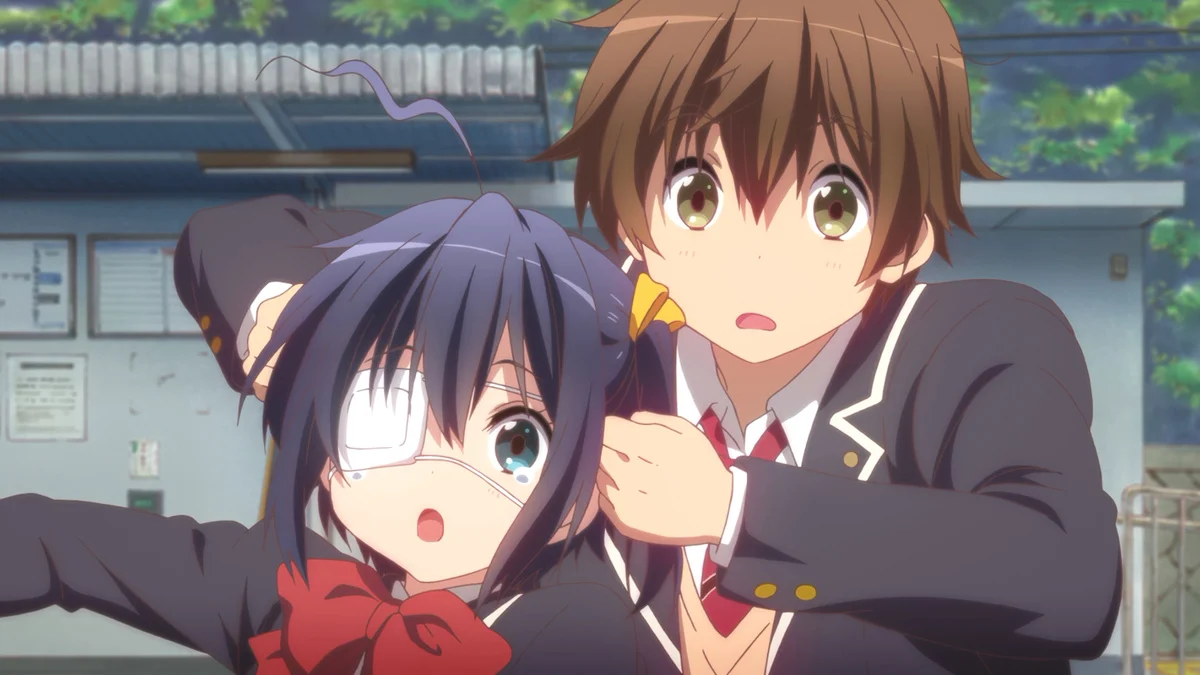
Kyoto Animation has produced a plethora of beloved anime series, and among them, Love, Chunibyo & Other Delusions! holds a special place. The series revolves around a phenomenon known as Chunibyo, which refers to adolescents who harbor grandiose and unrealistic delusions.
After outgrowing his own Chunibyo phase, Yuta Togashi strives for a normal high school experience. However, his plans are thrown into disarray when a classmate, Rikka Takanashi, resurfaces memories of his past and attempts to draw him back into the world of Chunibyo with her own fantastical delusions. Through their evolving relationship, Yuta looks into the origins of Rikka’s delusions, looking at the complexities of her psyche along the way.
“Love, Chunibyo & Other Delusions” (Japanese: “Chūnibyō demo Koi ga Shitai!”), often shortened to “Chunibyo,” is a Japanese light novel series written by Torako and illustrated by Nozomi Ōsaka. The series has been adapted into a highly popular anime by Kyoto Animation, known for its beautiful animation and heartfelt storytelling.
The narrative blends romantic comedy, drama, and slice-of-life, centered around the concept of “chunibyo”—a phase where adolescents exhibit delusional behavior, believing they possess supernatural powers or are part of a grand fantasy.
The story is set in a typical Japanese high school and follows Yūta Togashi, a student who once suffered from “chunibyo” during his middle school years. During this period, Yūta believed he was the “Dark Flame Master,” a powerful being with supernatural abilities. Embarrassed by his past delusions, Yūta decides to start fresh in high school where no one knows about his chunibyo phase.
However, his plan to lead a normal high school life is disrupted when he meets Rikka Takanashi, a girl who is still deep in the throes of chunibyo. Rikka believes she possesses the “Wicked Eye” and often engages in elaborate fantasies. Despite his initial reluctance, Yūta finds himself drawn into Rikka’s world and agrees to help her navigate her delusions while coming to terms with his own past.
Yūta Togashi: The protagonist, Yūta is a high school student trying to leave his chunibyo past behind. He is kind-hearted and often finds himself helping others, even if it means revisiting his embarrassing past. His interactions with Rikka lead him to a deeper understanding of himself and his own desires.
Rikka Takanashi: The female lead, Rikka is an eccentric and imaginative girl who believes she has a “Wicked Eye” that can see hidden truths. Her chunibyo behavior is a way for her to cope with personal trauma, making her character both whimsical and deeply poignant.
Shinka Nibutani: A classmate of Yūta and Rikka, Shinka was also a chunibyo during middle school, where she went by the name “Mori Summer.” She tries to hide her past and presents herself as a model student, but her history often resurfaces, leading to humorous and touching moments.
Kumin Tsuyuri: Another classmate who joins the group, Kumin is laid-back and loves to nap. She is supportive and kind, often providing a calming presence amidst the chaos of the chunibyo antics.

Sanae Dekomori: Rikka’s loyal friend and fellow chunibyo sufferer, Sanae is devoted to Rikka and shares her delusional worldview. She wields fake weapons and is highly energetic, bringing a lot of comedy to the series.
The central theme of “Love, Chunibyo & Other Delusions” is the concept of chunibyo itself, representing the awkward and imaginative phase many adolescents go through. The series explores how these delusions are often a form of escapism and a way to deal with real-life issues.
Yūta and Rikka’s journey is one of personal growth and self-acceptance. Yūta learns to embrace his past rather than be ashamed of it, while Rikka gradually faces the underlying reasons for her delusions. The series beautifully portrays how both characters help each other grow.
The relationship between Yūta and Rikka is central to the story, evolving from reluctant acquaintances to close friends and eventually to a romantic couple. Their dynamic is heartwarming and filled with genuine moments of connection and understanding. The series also highlights the importance of friendship and support from those around you.
Chunibyo balances comedy with heartfelt moments. The humorous elements often arise from the characters’ delusional antics and misunderstandings, while the emotional depth comes from their personal struggles and relationships.
Kyoto Animation brings the world of “Chunibyo” to life with their signature high-quality animation. The art style is vibrant and detailed, capturing both the whimsical and realistic elements of the story. The fantasy sequences, where characters act out their delusions, are particularly well-animated, featuring dynamic action and imaginative designs.
The character designs are distinctive and expressive, perfectly conveying the personalities and emotions of each character. The use of color and light further enhances the visual appeal, creating a visually entertaining experience.
The voice acting is superb, with Jun Fukuyama as Yūta and Maaya Uchida as Rikka delivering standout performances. The music, composed by Nijine, complements the series well, with memorable themes that enhance both the comedic and dramatic scenes.
“Love, Chunibyo & Other Delusions” has been highly praised for its unique premise, engaging characters, and emotional depth. It has resonated with a wide audience, particularly for its honest depiction of adolescence and the challenges of growing up. The series has been credited with popularizing the concept of chunibyo and bringing it into mainstream awareness.
The anime adaptation, in particular, has been lauded for its animation quality and faithful adaptation of the light novels. It has received high ratings and remains a favorite among fans of romantic comedies and slice-of-life genres.
“Love, Chunibyo & Other Delusions” is a charming and emotionally rich series that explores the complexities of adolescence through the lens of chunibyo. Its blend of humor, romance, and drama, combined with its beautifully animated visuals and well-developed characters, make it a standout in the anime and light novel landscape.
Whether through its heartfelt exploration of personal growth or its delightful comedic moments, “Chunibyo” offers a compelling and memorable experience for viewers and readers alike.
Memes of the Day
#Ima Made De Ichiban Yokatta S*x The Animation
Pixiv 118198061#1
For full images search – Pixiv 118850333
Its a 4 pages pixiv manga to watch search – Pixiv 119031749
Pixiv 118936247
Young Housemaid
Car Hunter [Yumoteliuce]
Sins Of The Past [Soymu]

